最近の記事
電子工作キット
- 7910メロディ IC キット: RK-250
- RADIO KITS IN JA : mc34119 stereo amp キット :SW-65に収納できる小型基板
- RK-134 :真空管 ラジオに SメーターをつけるKIT
- RK-03 :真空管 ラジオに 周波数 カウンターをつける
- トランジスタ式ミニワッターPart2 基板キット: ぺるけstyle
- RK-226 ディスクリートアンプキット /2SA1015+2SC1815
- RK-129 : AM ワイヤレスマイクキット(MC1496)
- RK-26 : AMワイヤレスマイクキット(NE612)
- RK-144 : TDA1572 短波ラジオ自作基板キット
- RK-30 : 自作用455kHz発振器キット。IFT調整用
- RK-42 : 100kc marker KIT
- RK-114 : 9石スーパーラジオ基板キット
- RK-123 : 同期検波基板キット
- RK-112 : スタンバイ ビー自作キット(後鳴り)
ラジオ系情報
- ラジオ少年
- サトー電気
- フォアーランド電子
- ポータブル・ラジオのページ
- CYTEC
- CRkits共同購入プロジェクト (JL1KRA)
- 有限会社五麟貿易
- Wコールがききたくて
- ラジオ兄さんの電子工作日記
- 電子パーツ通販のKURA-本店-
- DFK技術研究所
- 田舎の少年
- JA9CDE自作を楽しむホームページ
- 沼南ラジオ工作室
- qrp-gaijin
- 祐徳電子(Yutoku Electronics)
- CHINA ARDF WEB
- ラジオの製作 jq16146のブログ
- 東栄変成器
- スピーカーネット(網目)生地
- Tolex グリルクロス Tweed ツイード Fender Marshall
- 門田無線/TOPページ
- ラジオ少年の博物館、真空管ラジオ、鉱石ラジオ、ラジオの修理
- 【SWP GINZA】スピーカーネット商品一覧
- Internet Archive Search
- 真空管パーツ販売 (フロービス)
- GT管これ:レトロ真空管らじお -
- Evolve Power Amplifiers
- 真空管ラジオのお部屋 JH4ABZ
- JF1OZL
- YO3DAC - Homebrew RF Circuit Design Ideas
- UK Vintage Radio Repair and Restoration Discussion Forum
- OZL archive
- ozl-2
- ブラウザ電子回路シミュレータ「ざわざわシミュレータ」
- JA1AYO
- QRP掲示板
- Synchronous Demodulation
- Alan Yates' Laboratory - 555 Super-Regenerative IF HF Spectrum Analyser
- ELEKTOR: Electronics hobbyist magazine from the UK and India
- WIRELESS WORLD: UK technical magazine 1913-2005
- POPULAR ELECTRONICS: Consumer Electronics and Experimenter magazine
- 電子工作
- nobchaの電子回路日記
- Push Pull Amplifier Bias Calculator
- headphonesty.com
基礎系情報
- 地表面の熱収支と気象
- DIP Type Of 3.5mm Audio Sockets
- OPアンプはオカマアンプ
- Crystal ladder filters
- RigPix Database - Schematics, manuals 'n' stuff
- 皆空の中で... Smith V3.10
- Amplificadores Lineales RF
- 電子工作の実験室
- Brabec Homepage for Studio Musician and Engeneer
- フィルタ計算ツール
- 真空管(Electron tube) 規格表データベース | トップページ
- Eagle-Libraries/Processors/Microchip at master · chiengineer/Eagle-Libraries · GitHub
- 12AT7-6AK6 セパレート再生 2球ラジオ
- JIS C 6102-1:1998 AM/FM放送受信機試験方法 第1部:一般的事項及び可聴周波測定を含む試験
- 太陽光パネル メーカー - 会社のデータベース
- 浅川太陽光発電所 - 八ヶ岳・北杜市大泉 -
- 資料・技術情報 >> マルツオンライン
- みんなでやろうJARL改革!
- LC共振の周波数 - 高精度計算サイト
- PLC 行政訴訟 異議申し立て
- Frank's electron Tube Data sheets
- Heathkit Schematic and Manual Archive | Vintage Radio Info
- Index of /schematic
- Popular PDF DOC and PPT files
- ボクにもわかる地上デジタル
- いめーじ あっぷ
- ユニパルス真空管展示室
- オーディオの科学
ラジオの動画
- 自作真空管ラジオ。 AUXにFMチューナーからの信号 - YouTube
- スマホでラジオauxへ入れる - YouTube
- ロクタル管自作ラジオで youtubeを聴く
- 6D6再生ラジオで実験
- ハム音の比較にどうぞ
- radio counter
- 真空管ラジオのブーン音はどこまで小さくなるか?
- 12Z-E8 マジックアイ RE-860 - YouTube
- はいぶりっどラジオ 1-V-2 デジタル表示
- TRIO FMチューナー FM-102をST管UZ-42で聴く
- ラジオ工作 6GX7 レフレックスラジオ
- 4バンドラジオキット KIT-006D
- メタル管ワイヤレスマイク 真空管インジケータ
- 「レフレックス+再生」式 単球ラジオ。
- 自作6球スーパラジオの音。 6BY6,6BD6,6BD6,6AL5,6688,6AQ5
- FM /AM 真空管ラジオ FM-11 シャープ
- 超再生式FMチューナーキット DBR-402
- 真空管ラジオ CM-615
- GT管6球 スーパーラジオ
- トランスレス ラジオ UA-360 2号機
- トランスレス ラジオ UA-360 1号機
多種類リンク
- hiro99ma blog
- electronics-tutorials
- ManualsLib - Makes it easy to find manuals online!
- flightradar24
- ネットゲリラ
- アイドラッグストア
- ベストケンコー|公式薬通販サイト|Bestkenko.com
- Kazumoto Iguchi's blog 3
- 千曲川河川事務所 千曲川・犀川ライブ映像
- 大町ダム管理の監視カメラ一覧
- 大町ダム観測所
- 北アルプス東麓防災情報
- MS blog(ブログ)
- 地理院地図
- 中部電力 申し込み書類サイト
- YokoとJazzと○○と
- シール印刷・Tシャツ・マグネット|印刷通販【デジタ】
- クロネコポイントメニュー | クロネコメンバーズ
- 株式日記と経済展望
- LOHACO - 食品・調味料・缶詰 通販
- 中国茉莉花革命
- 大島てる
- キャッツクロー
- クトゥルー神話と堤康次郎 - ネットゲリラ
- ファミリー薬局SG | 医療用医薬品の非処方せん薬、医療用漢方薬、第1類医薬品、新規第2類医薬品
- 総務省 電波利用 電子申請・届出システム Lite
- チョイあげ本舗のお買い物ページ
- A.G. Tannenbaum
- R148 大町⇔小谷 道路映像ライブカメラ
- .− TODAY'S REMARK − 今日の必ずトクする一言
- 【未解決事件】皇室ゆかりの品、ヤフオク大量流出事件【風化防止】 ‐ ニコニコ動画:GINZA
- 随想 | 文苑 | 東京木材問屋協同組合
- 静嘉堂文庫美術館 | 刀剣・刀装具
- ようこそコンピューター画像解析の世界(古墳陵主)へ
- 一式戦闘機「隼」研究所-隼の誕生
- ■□ ようこそ体験教室の青木湖キャンプ場へ ■□■
- 二階堂ドットコム
あちこちの回路で見つけた疑念 
2024年5月 4日 (土)
2024年4月30日 (火)
無帰還純A級オールディスクリート : 直結型NFBですわ2
CLASS Bのアンプ。
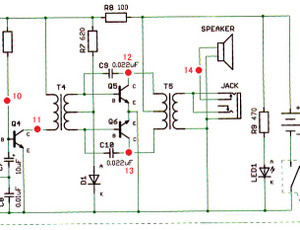 この話の続です。
この話の続です。
CLASS Bの動作説明。 push と pullがある。
************************************************************
1970年時点では、current dumper と呼ばれた回路。上のCLASS Bに多数部品を吊るしただけ。
非等負荷差動回路に加えて、R17、R20では 電圧はイコールにならず、あとあと面倒だと思う。
この多数部品を吊るしたCLASS Bは、下図のように直結帰還型アンプ。
帰還量は、
「470 vs 330k」 と 「R11, R18,R19」の2ラインで決まる。しかし信号到着時間差が10ナノ秒??程度生じてしまう。 それをどうするか? は FA機械設計屋のオイラには無理。
周波数特性はC5の値にかなり左右される。
自称「無帰還 A級」です。
本当の無帰還アンプはメーカーからでている。 それはここ。
****************************************
高fT/高速SWトランジスタが開発された80年代以降、 小信号時A級大信号時B級の可変バイアスコントロール が可能になり熱排出と能率問題の改革につながった。
商売のためにはイメージUPが必要なので「リニアA」、「ノンスイッチング」、 「A+級(Class A+)」、 「Class AA」、「New Class A」 「ピュアA級」、「ノンスイッチングA級」、 「New Super Optical Class A」、 「HCA」、「Dual Amp Class A」、 「ピュアA」、「スーパーA」、「クォーターA」等の名称で 「B級アンプをA級と混同するように仕向けた」。
無帰還純A級オールディスクリート : 直結型NFBですわ。 それでも無帰還???
マルツのサイトで、無帰還、、、、と紹介してあった。
この手の回路、無信号時でも精密級テスターで測ると0.00Vには為らないのを経験してきたが、これは0.00Vつまり 0.004Vよりゼロボルトに近いらしい。スゴイ。
差動部も等負荷でないので、Q1,Q2に流れる電流は違うはずだが、ちょっと不思議ぽい。
seppで無帰還ってのは コールド側からの信号が回って簡単に成立しないので、眉唾???と思って古書で確認した。
昭和47年(1972年)刊行。
RNFと表現されている。直結にするか C経由なのかの違いではある。 CLASS Bと紹介されている。
************************************************
、、とラジオ技術全集 木塚茂著の「トランジスタアンプの設計・製作 172ページ」でしめすように、NFB抵抗が配置されている。 赤線で囲った。
以上
****************************
追記
昭和38年(1963年)でも公開されている直結差動形増幅器。
入力端でない側は 帰還信号を受けるのがデフォルト。 等負荷にして対電流がイコールになるように考えてある。この等負荷回路では TR1,TR2はhfeを揃える(TR5の影響で厳密には電流値は異なる)。TR3,TR4は電流イコールにならないので それなりのhfeで使う。
ゆとり世代は学習しなくても大人になれるので、 オツムの弱いのが目立つね。
2024年2月19日 (月)
A1級とA2級 雑誌記事をみていると、「A1級シングル」だとか「A2級動作」という言葉がでてきます。
A1級とA2級
雑誌記事をみていると、「A1級シングル」だとか「A2級動作」という言葉がでてきます。
これ、ガラパゴス ジャパンでの呼び方。電気回路教本にはないA1,A2を持ってくる時点で、先人がつくりあげた科学を学習していないね。 言い換えると反知性。 オツムはお子ちゃまだと判る。A1,A2との謎用語を使うタイプとは距離を置くのが正しい。
世界には通用しないので、知識水準を下げたい層がつかうようだ。PP 動作をCLASS_Aと信じるの勝手だが、それの布教活動は「電気回路学習してない」ことが露呈している。広義の反知性主義でもある。 電気系学校ではpp動作はCLASS_Bと正しく学ぶので、反知性主義者は学校で学んでいないね。
GGアンプをCLASS_Aと呼んでいる勇者も米国にはいる。
********************************************************************
ラジオ技術は日本発祥ではない。
本家から学ぶように。真空管のリニア本を購入すると動作説明されているので理解が速い。
https://en.wikipedia.org/wiki/Power_amplifier_classes
push も pullもない。 CLASS_A
pushするTR と pullするTRが存在する。 CLASS_B.
*********************************
pish-pull 動作( CLASS_B )をCLASS_Aに近づけようした回路技術は1970年と1971年に掛けて英語圏で散見される。勿論 動作原理説明が公開されている。
繋ぎ部分を改善する回路は current damper と呼ばれていた。 RFではダンパー抵抗を使いQ低下させるが、これは電流を触るからだろうと思う。
日本語では 無線と実験に紹介されていたかどうかは、オイラ知らず。
2024年2月 7日 (水)
PAM8403 の謎 https://www.diodes.com/
D級アンプには、2つのFETが同時にオンしないようにデッドタイム生成回路(信号受け取り拒否時間)が存在する。 これは常識。
CQ出版の「トランジスタ技術」に公開されているように、「全体を100としたら5~10ほどは 信号受け取り拒否時間」になる。 ここ。
ここからデバイスの話。
diodesのICに PAM8403がある。PAM8403-2998553.pdfをダウンロード
poweranalog社のDATAもある。PAM8403.PDFをダウンロード
データシートではIC外部にフィルターを入れての計測数値が公開されている。
When testing the PAM8403 without LC filters by using resistor instead of speaker as the output load, the test results, e.g. THD or efficiency,
will be worse than those of using speaker as load. 、、、とフィルターなしでのテスト時には注意書きしてある。 つまりメーカーはフィルターレスでは無計測だ。
デジタル信号なので矩形波。 音源信号の50%は捨て、残り50%で再現するのがデジタルアンプ。 「"音源信号50%を捨てる"を気にしない鈍感タイプ」ならば、使うだろうデジタルアンプ。
Q1、製造元はどちらなのか?
Q2, USB3.2仕様では 供給上限電流 0.9A。 片CHあたり3W出力ならば計6W出力になり 供給電流1.2A(5VのドロップNG)は必要になる。 これを流せるUSB規格はUSB Power Delivery。 この電源仕様で使っているのか?
Q3: data sheetは「LCによるフィルターAUXー0025 」を通過させての数値だ。製造元としてはフィルターを入れて使うことを暗に推奨している。 LCフィルターない基板が流通しているが、 実性能を計った人物はどこにいるのか?
LC入れると鈍るので高次歪率は減少していく方向にはなる。性能の見掛けをよくするテクニックでもある。
Q4: 歪率が3kHzあたりからガツンと上がるので聴感でバレそうだ。 これ違和感なく聴けるならば耳が可笑しい可能性はないか?
Q5 : USBの仕様クロックが100kHz。この100kc信号が電源5vに重畳していない確認を行ってから使っているのか?
************************************************
総務省の公開資料では、 デジタル通信は通信量3/6で成立するのが現仕様。半分欠損でも成り立つように推測しつつ補正する通信になっている。 真値との整合性は不問でもある。有線・無線でのyoutube 信号は、真値とは異なっておっても合法であり、「それを良い音で聴きたい」と思うのは随分とオツムが悪い。 原音にない追加された音を求めるならばyoutubeをお薦めする。
音源情報の50%はA/D変換で捨てる。A/Dを通過したデジタル信号の5%はD級ですてる。
音源の演奏時間を60分と仮定するとA/D変換で30分は捨てている。 この音質が良いですか?
2023年11月29日 (水)
A2級 AB2級 真空管動作
本記事を書いているのは、35年間ほどFA分野の装置設計をしているおっさんです。機械設計屋の前は、PCボード修理、 ウオークマン、ラジカセの製造ラインの責任者:修理技能者してました。機械設計の方がオツムを使うので職を変えました。
105℃の電解コンデンサーはいまは世界標準になっている。
砂漠エリアでのランクルでは80℃コンデンサーが耐えられないとのことで、発端はデンソーが「105℃の基板検査装置を仕様化した」ところが起点。これが1998年4月。強いリクエストが砂漠の民からtoyotaにきたのが発端になっている。砂漠のゲリラにしてみりゃ軍標準はトヨタだからねえ。
「105℃ と マイナス40℃ での基板検査装置 国産第一号」は、オイラの設計・製作。デンソー発注で、駒ヶ根市の日電(nec)に納入。 仕様打ち合わせはデンソーのエンジニアとおこなったが、日電に納入。 デンソー社員のオツムのキレは凄いね。 他社生技は子供に思えるほどデンソーはオツムの出来がよい。2021年?。日電駒ヶ根事業所は閉鎖した。
その「高温105℃と低温-40℃での基板検査装置」分野は、塩尻市の大林社長んとこが2004年頃からトヨタから可愛がられて35億円売り上げるとこにのびてきた。創業者の大林氏も昨秋鬼籍に入った。
エロビオデオ販売機製造も松本市にありごっつう儲かっていたが、西暦 2000年前に法人消滅させて、幾つかの会社を興して年商50億近い昨今だ。こんなことを直に知っているのは10人もいない。
ハンドラーのsynaxが、1億円/1人売り上げていた頃(1997~2002)は 台湾に降り立つとsynaxのポスターだらけだった。日本法人のポスターは他になかった。東証2部上場を視野にいれてたはずなんだが、、。
、、とオイラは田舎の機械設計屋です。
電解コンデンサーは、△△メーカーのが音がいいとか悪いとか騒ぐが、装置は基本おなじ。使っている材料がすこし違うだけで計測上差異はない。
電解コン: 実は製造工場の標高(気圧)により音が違う。これ豆知識。1気圧と0.95気圧では同一質量では液体は体積が違う。
*********************************************************
本題はここから、
オイラが中学生の時には、A級、AB1,AB2,B級、C級の動作が紹介されていて、真空管ラジオの通信教育(1960年代)でもそうなっていた。視点は「リニアティと動作点」の2点。グリッドがポジティブ動作になるものはB、AB2になる。 ポジテイブ動作にならぬがリニアでないものがAB1. 非ポジティブ動作でリニアティのあるものがA級。 CLASS-Tとか CLASS-XDは検索しないようにお願いします。
今日、A2級 との言葉が生じているのを知った。魚拓はここ。 2014年のアーカイブはこれ。。
つまり善意なお方がおられて2014年時点で魚拓になっている。 8年間の歳月では訂正時間としては足らないらしい。「各級の動作には、1級と2級があります」とのweb siteご本人の主張によればC1級とC2級も存在するとworld wideに公開している。
A2級 との言葉で表現された動作について
:動作点・特性からはAB2級 そのものだ。刊行本を10冊程度執筆しているご高名人のwebsiteで造語を見つけた。 もともと理系にしては統計学の概念を知らないので 妙だ とみていたが、 誤った用語を勢力的に広めていただいておる。 真空管特性のバラツキ(偏差?)を無視した設計をしているので、「すげえ~? 大丈夫なの?」とは見ていた。
誰がいつ 謎用語を造ったのか??? 「既知技術を 造語作成し吹聴するのは先人を馬鹿にしていて駄目」だよね。 もともと日本発祥の技術ではないので先人から学ぶのが正しい路である。欧州・米国ではclass-AB1, AB2になっていた。
上のは ここに公開されている。
・SEPPの回路はCLASS-B. クロスオーバー歪を減らす目的でCLASS-A側に少しよせた動作をさせている。(厳密にはCLASS-Bでない)。 CLASS-Aってのは相360度をONE DEVICEで出力させる回路。 これらは戦後のトランジスタアンプ設計書に記述がある。
・SEPPはsingle ended push pull の略。 つまりpush pull する回路 イコール class_B。 仮にSEPPをCLASS_Aと呼ぶならばpush pull動作しちゃまずい。 オツムの悪い人物達がseppをCLASS_Aと誤称している。 PP動作の繋ぎ改善は current dumper と1968年頃英語圏で呼ばれていたのは往時月刊誌をみて判った。
・CLASS-Aでの理論効率は0.26 。
・CLASS-Bは理論効率0.56くらいだった記憶。日本でのweb作例では実測効率0.1が主流。 つまり供給エネルギーの9割を捨てているので「反ECO」である。(効率がCLASS-Aより低い使い方なので CLASS-Aがシンプルでよいと思う)。 本を多数出版しているお方の回路で製作したら、実測効率0.15。
「電流駆動回路とは差動回路のメリットを捨てた回路である」ことは ふつうのオツムなら知っている。 差動回路信仰派は、 電流駆動回路派に対し技術論を展開しないとaudio amp系では先々肩身が狭くなるが、 どうするんだろうね???
わかりやすい説明を引っ張ってきた。ソース元はここ
*****************************************

The three major parts that make an amplifier tube are: the Cathode, the Grid and the Plate. The Cathode heats up when voltage hits the tube, causing a cloud of electrons to form. The Plate has a positive charge, which causes the negatively charged electrons to flow toward it. The Grid controls this flow of electrons. It is also the audio signal input for the tube.
An audio signal entering the tube causes a change in voltage at the Grid. This change in voltage changes the flow of electrons and causes amplification.
The behavior of electrons described above is an example of a Class A amplifier. These amps apply a positive voltage to the Grid. Class AB amplifiers apply a negative “bias” voltage to the grid. This bias causes the electrons in the cloud to avoid the Plate. This is the standby mode of the tube.
The voltage of the audio signal entering the Grid causes the voltage on the Plate to change from negative to positive. This attracts the electrons in the cloud and causes them to flow to the plate. The tube in the Class AB amp then behaves like a Class A described above.
The need to change the charge of the plate from positive to negative causes the Class AB amplifier to feel less responsive than a Class A amp. But it also means the tube components aren’t in full use even when a signal is not passing through. This means the tubes generally last longer.

**************************************************************
このSITEもお薦めだ。
1960年刊行 JAのLINER AMP本をみても A,AB1,AB2,B,Cはある。真空管アンプの直線性について知るのはリニアアンプ本がベストだ。10KW~500KWでリニア出力に携わってきたエンジニアが関与しているので、AUDIO AMPとはパワースケールが違う。
超音波焼き入れに使う球は、東芝球が主流。yahooでも頻繁に見かける。RF1KW~10kwていど焼き入れ用球をAUDIO用 A級動作させると50W AMPクラスは安くできあがる。
半導体のバイアスは ここにもさらっと紹介されている。 webで見つけた偽りは、ここにまとめつつある。
2023年11月13日 (月)
アースポイント 間違い例 : 於 yahoo japan 真空管ラジオ
古物商許可がない古物商。
千葉県警よ 仕事しろよ。
**************************************************
ラジオ感度が下がるようにコイル配置した作例。
春日電機からは「Qを下げないためには、コイルは3cm程度は金属シャーシから離して配置」と1948年頃に広報されているのを、知らないおっさんの作例。 当時ラジオ小僧であれば既知の実装技術。
Qを知らないおっさんなんだろう。 筒端を金属にむけちゃ駄目。
*********************************************
「局発コイルのアース端」は、 写真のような結線ではNG.
理由が理解できない方には、日本放送協会出版物を読んでください。およそ65年前からの公知技術。
ノイズを増やすために配線した例。
理由が理解できない方には、日本放送協会出版物を読んでください。およそ65年前からの公知技術。
オシロでみてもノイズが強いのが判る作例。
*********************************************************************
②
AFノイズを増やすように実装した例。
電線寿命が2回転している作例。
ここまで絶縁度が下がっていると漏電出火するのを防止できない。
**************************************************
2023年11月 9日 (木)
3連バリコンとシールド筒が接触しそうだ(悪い見本):RS-350 。 於 yahoo japan 真空管ラジオ
https://auctions.yahoo.co.jp/seller/judge_48yn6c
と出品主は、judge_48yn6c らしい。
3連バリコンとシールド筒が接触するのは、 拙い。
バリコン傾斜しており、メーカー設計にしては 非常に変。 これで1万個も量産していたとは思えない。 製造ラインのおばさんから、「 設計は馬鹿じゃないの?」と休み時間に云われてしまうわ。
バリコン取付金具位置を 7mmほど中央にもってくるのが、「エンジニアの良心」。この事例ならば 「修理者の良心」。
ひょっとして ニコイチ ラジオ???。
やっつけ仕事のようでもある。
これ、写真ごとにバリコン傾斜角度がちがう。
おそらくはグラグラ状態(写真撮影中に動くのはありえないね) 。
リジットに固定されていない見本。(悪い見本)。
もしも入手したならば「 バリコン周辺は手直し 必要」
2023年10月18日 (水)
0dB HyCAA基板
設計思想は、個人資質・経験に属するので いろんなものがある。
0dB HyCAA基板。
これ信号ラインにCR共振点が存在する。そういう思想だ。
ずばりシミレーションさせると、聴感上で美味しい周波数で共振する。 結果、山になるか谷になるか? さてどちらでしょうか? シミレーションが追い付かない「キャンセルする工夫」を盛り込んであるのかもしれん。 高周波で見掛ける吸取trapを 可聴域に持ってきたようにも見える。
一般的には、周波数特性を山(谷)形状にしたらHi-Fiは困難だと思う。
製作者siteをみたが 実測特性を発見できなかった。深いとこにあるのか?
VRを絞って、スイッチングノイズ(実に可聴周波数なので聞こえる)が出力端で20mVも確認できるFX-AUDIOが大人気なので、 リスナーの聴感がかなり悪いのかもしれん。
******************************************
push pull 動作はclass Bになる 。
class ABの歪を減らす回路は英語圏発祥。 往時の英文を読むと、日本語ではまともに説明されていないことも判る。
信号ラインにCが入ると電流peak と電圧peakが ずんずんとズレてくる。これ人類がCを見つけた時からの事実だ。 おまけにCを使ってNFBを掛けるとオイラのオツムでは理解困難なほどに、相がずれている。
電流相と電圧相を揃えるとエネルギー変換効率がよいのは既知であり、普及タイプの冷蔵庫にもその技術は使われている。 次は家庭用音響に浸透してくるだろう。 自作アンプで相を整える記事は近年みていない。
2023年8月21日 (月)
LM386 革命アンプ : LM380 革命アンプ
出口からC+Rで帰還させるので 増幅度は下がる。 ノイズレベルも下がる。 SNはそのままに近いんだが計測していない闇がある。 計測しても隠している可能性もあるだろう、、、と。
英訳すると、LM386 revolution AMP.になるだろう
LM386革命アンプ。
革命??
革命の概念を定義つけしたのは、マルクス。それ以前には、概念がない。日本での出版物としては、割と薄い本に載っていた。
革命と訳したのは日本での共産主義者。 革命って用語は社会科の用語なので、これを科学に当てはめるのは、相当にオツムが悪い。
つまり、高校社会科の時間には寝てたことも推測できる。思想的背景のある用語を使うには蛮勇心が必要だ。「 クーデター と 革命 は異質である」が、ゆとり世代を育成成功した文部省では、高等学校では教えない指針らしい。
************************************************
「外部NFB作用により増幅度を減少させ、 NFB入力を2番ピンではなく1番ピンで行うことを特徴 」するらしい。
LM386は内部抵抗15kにて直結NFBを掛けており、NFB量は「15K :1.5K 」の比に依存する。LM386の増幅度も15Kの大小に依存する。 AF AMP ICでは「25K:300」なんてのもある。そこそこNFBが掛かっているICのひとつにLM386がある。
LM386革命アンプでは、外部NFBと 内部NFB、 つまり2ルートでNFBが掛かる。 2ルートなので時間差攻撃にはなる。(X攻撃にちなんで X帰還 とでもよぶ???)
外部NFBにCを使うとNFB信号電圧と信号電流の到着時間差がいつも生じる。 コンデンサーは電流が進相になる。これは強電で基礎学習として学ぶ。
検索したら上位にあったのでハードコピーしてみた。
下図のように2200pfで90度進んだ信号が6番ピンに入る。out putから1000uFと0.1uF経由で180度進んだ信号も加算される。6番ピンにしてみりゃ時間差攻撃を受けている立場になる。これとは別に内部Rnfにより直結帰還もある。 アタマが禿げそうな動作式にはなる。
LM380: 内部NFBは 25K : 1Kになっていた(TI 社の380)
この内部回路からすると 1番ピン電圧は掛かり過ぎな気配だ。 そこが改善されたのが386。SEPPのコールド側が前段とは分離されているので SN改善できる。それを実行するかどうかはオツム次第。
NFBにコンデンサーを入れると電流相ズレが生じる。電解コンデンサー2個経由なので180度の相ズレする。C起因で180度進相する。図では8番ピンから6番ピンで 180度進んだ信号を入れる。つまり相が打ち消しあって 入力信号は弱くなる。アッテネータを入れたように小さい信号になる。
繰り返すが 「内部NFBと外部NFB」の合わせ技になる。外部NFBはコンデンサー起因の相ズレもでるので、違和感がすくなく聞こえる周波数帯は限定される。
この様を数式で表現する力があると、第3種電気主任技術者の試験は楽に受かる。2ルートNFBでは信号1kHz だと聴感でわかる時間差になるが、 耳が駄目ならわからんわな。
LM386 等価回路
書き換えた。上記内部抵抗 R=15K(12K)を触って「パラレル追加として 抵抗+Cを入れる奴はいない」だろう。 等負荷差動回路ではないので、差動部の電流はイコールにならない。結果差動対にする科学的理由はない。
pin1は下作図のように使うのがベスト。JF1OZL氏の実験のように70dB超えのゲインも取れる。
LM386革命?アンプは、「アンプの増幅度を下げる回路」なので、「増幅度がさがったら、つられてノイズもさがったのでSNは同じ」ってのは当然。
「SNが改善されたかどうかは実測数値を見るのが科学的」である。LM386革命?アンプにおいて SN 改善具合を調べているがHITしてこない。 実験データがどうも見えない。 いわば空想の世界に近いまま 唱えられているらしい。 さてSNは改善されているのかどうか?
2ルートNFBは 時間差攻撃??になるのでプロ回路では、視た記憶が弱い。 7番ピンの電圧大小で初段ゲインが違うので、7番ピンにCをつけるとゲインはでてくる。 電源が高い電圧だと初段動作点がゲインが減る動作点になるので、くふうしたほうがいいこともある。
以上、雑感。
*****************************************************
LM386は AF AMP ICの中では よく練られたICである。自由度が高いし、差動入力にしてある。 当時の日本製AF AMP ICは差動入力になっていないので、かなりの技術差を感じる。
音がよいディスリートアンプ基板 RK-226.
イプシロン打ち上げのシクジリは、総システムとして診るチカラのある人物がいないことが起因。
2023年6月26日 (月)
dual fet と dual gate fet
dual fet:
ここには日本語のオカシイ人物が記事を書いたようだ。
dual fet と dual gate fetは、 異なるものの名称である。
「dual fetをペアにしたら2段差動回路になる」が、2段目のは入力回路でなく単なる中間増幅だ。
入力回路と公言しているので、原稿ライターはオツムが悪い。
2023年5月31日 (水)
ぺるけ式 トランジスタ式ミニワッター Part5 19V用
「ぺるけ式 トランジスタ式ミニワッター Part2」は2ルートNFBなので、帰還信号どうしで喧嘩した音になるのが特徴。 この特徴はPart3以降は捨てられている。 「ふるぱわー出力」にはドライビングに660mV(Z=600)必要なので、 「音源は1V出力タイプ」で設計しているぽい。
ラジオ工作ではアンテナ端に誘起した1uVを 検波段通過後に10mV程度になるように、1000倍ほど増幅する。 AUDIO AMPより増幅度は大きい。増幅度が大きので発振しないようにレイアウトを考えることからスタートする。
*************************************************************
「ぺるけ式 トランジスタ式ミニワッター Part5 19V用 の出品者」 に
効率とドライビングパワーの質問をした。
製作時にデータを取ってなきゃ 転売ヤー??
おそらく電流は1.2Aは流れるので抵抗損が生じない導体断面積が算出される。AF AMPなので表面積でなく断面積。
バイアスに使うダイオードで音色が異なるので、「特性と音色」で決定するデバイスだ。 音が聞き分けられる耳を持っているならば、そこを明確にしなきゃならないデバイス。 明確にしたsiteは 少ない。これは意外である。 オイラは手元にあるdiode(1s1588等)を使っている。
回答をみて PART5の改善点を考えてみよう。
*************************************************
2023年5月18日 (木)
漏電してもしらんけどね
電線寿命(20年)を超えて使い続ける例。 漏電してもしらんけどね。
**************************************************************
「電気工事資格者なら こんな古い電線は、怖くてつかえない」。それだけです。
**************************************************
ラジオ部のコンデンサーを寝かせ投影面積を増加させ、浮遊Cをわざわざと増やした作例。昭和のNHKテキストにも 、「浮遊C増は感度劣化への一本道」のことは書いてある。
これを中波800kHzあたりからからうえでやられたら、 トラブル多発、 感度劣化大になるので、「ラジオを造った経験はゼロ」だと推測できる。もっともラジオ工作教本にそって学習すらしてないですね。
おまけに6z-dh3aヒーターピン結線が間違っているぽくみえる。 正しくないぽい。
*********************************************
修理品として 妖しいものはここにまとめてある。 地雷を踏むも踏まぬも己のオツム次第です。
2023年3月21日 (火)
2023年3月 6日 (月)
lc共振
さて 中学生でもできるlc共振ができなくて苦労しているsiteがあった。
>その結果、どうにか中波全帯域をカバーできるようになった。
>が、今度はカバー帯域幅がちょっと広すぎて、フルスケールで230KHz~1900KHzくらい。
バリコン容量と局発Lから 中学生算数でOSC周波数がきまる。 だから計算してバリコン購入する。 オイラは計算して購入している。 局発はメーカーが違うとLがやや違うがそれはコアだしいれてカバーできる。
2022年12月 4日 (日)
TDA1038 : 3Vでは12mW前後出力で CLASS AB(忠実度は劣る)
TDA1038のdata sheet : tda1038_data.pdfをダウンロード
3vでは20mWも出ないと公開されている。 そこでAITENDOは9Vでのヘッドホンアンプにした。9VだとTDA1038が焼損するので3端子レギュレーターで5V化している。
電池駆動のヘッドホンアンプなので9V⇒5Vにするような「45%を捨てるような非エコノミー」は設計思想としてよくないだろう。4.5V駆動で基板化すりゃ 部品代も20円程度は下がる。
CLASS-ABだ。忠実度は下がるので audio系では不人気のはずだね。ラジオアンプic
ディスクリートで音の良いヘッドホンアンプ回路は CLASS A。
*****************************************************
ANALOG DEVICEからは、
- AB級(クラスAB):AB級アンプはA級アンプとB級アンプを組み合わせてA級アンプより優れた効率でありながらB級アンプよりも低い歪みを備えたアンプを実現する。
これは両トランジスタをバイアスすることで実現され、信号がゼロに近い(B級アンプが非直線性をもたらすポイント)と動作する。トランジスタは偏位を大きくするためにB級動作に遷移する。
したがって、小信号では両トランジスタはアクティブでA級アンプのように動作する。信号偏位を大きくするために、波形の半分に対してはそれぞれ1つのトランジスタのみアクティブでありB級アンプのように動作する。
***********************************************************
引用元はここ。
CLASS ABには 高周波焼き入れAMPがある。 忠実度を気にしなくてすむので助かる。
*********************************************************
まとめ
音に神経を注いでヘッドホンアンプ自作するならばCLASS A.
CLASS A と CLASS ABでは音が物凄く違んだが聞き取る聴力がないと、CLASS ABが流行る。
2022年11月10日 (木)
電線には寿命がある。 これ有資格者ならば常識。しかし、それを学習しない異業種からの参入。
・電線には寿命がある。住宅での電線寿命と検索すりゃ、数字が見つかる。
・これ有資格者ならば常識。 もぐりは 寿命を知らない。電線 耐用年数で検索をお薦めする。
・電線寿命について保安規定の項にあげてある法人も存在する。
・電線寿命を超えた「修理例」が写真でおちてた。たまたま入手して、それが失火原因でも文句は云わないように。 オイラは怖くてブルブルする。 素人修理が人気になると技術は廃れる。
中国より下位の国に成り下がりる理由は、ここにもある。
**************************************************
近7年ほどで人気になった超有名siteに修理済例として公開されていた。
どうみてもaudio屋が 直した風。すべて「修理完了」とのお言葉でしめくくられていた。
バリコンからの線は、ややベトベトしそうだ。
パイロットランプ線は ベトベトだ。
siteのオーナーは「あちこちの錆を落とし錆止めを塗り、接点は擦り合わせて接点復活剤で導通を確認していきます。汚れはアルコールで落とします。」としている。
「ベアリングや回転部分に接点復活オイルを注油します。指針のスライド部分はグリースを塗ります。」とのこと。
摩擦が生じるところ(摺動部)に電気接点復活オイルを注油している。これ、そこに使っていた油分との化学反応が生じていると思う。 ベアリングに接点復活材をかけるとだいたいは脱脂してしまい、いままでの滑らかな動きからゴロゴロの音が聞こえだしてくる。
**********************************************
視て電線寿命・部品寿命を超えたことが判らないなら視力検査をお薦めする。
インターネットの普及とともに、技術・知識を学習していない者が頭角を現すようになった。高校で学ぶ程度のケミカルも知らんようだ。 がんばれ日本。
製造後50年経過してりゃ、電線寿命は2周期も到来済み。いきなり火災になるかどうかはお心持次第。
「電線寿命を超えた修理例」と検索すりゃ、事故例多数みつかる。法人での電線寿命超えての失火は、監督官庁の広報に記載される。
私人での電線寿命超えて起因失火は 、どうなるんでしょうか?
2022年9月28日 (水)
ベアリングや回転部分に接点復活オイルを注油。「浸透させ脱脂、ゴロゴロと云いだす」が何か?
松本の博物館館長と親しい方の修理例である。
**********************************************************************
・たまたまWEB siteをみたら、タマゲタ修理例が公開されていた。近6年ほどで大人気になったラジオ修理 web siteらしい。
・古い電線は発火することが度々ある。電線寿命 失火 で検索するとボロボロ見つかる。
・失火すると拙いので電線寿命が電線工業界から公開され続けて60年経過した。
・その寿命を2周回から3周回ほど超えているが、修理技術者にしてはあまりにも無頓着だ。製造工場に勤務経験がないことも 修理具合から楽に読み取れる。
・「修理済みとされるラジオ」から失火するもせぬも御心次第だ。
・ヒータピン配線を間違えていても お声はかかることもわかっている。
*********************************************
大事を取って、ヒューズとランプは新品に取り替えます。
ダイアル糸を張り替えます。
ベアリングや回転部分に接点復活オイルを注油します。
指針のスライド部分はグリースを塗ります。 とご説明中。
1,
上写真は「やっちゃ駄目」。 G17で固定化を狙っているが、抑え金具を製作するか? 或いは板金興してデブコンで固定。
SP外周についている接着剤とG17で2種類見えるのは何故だろう。 どこからか剥いできたSP???
青部品は樹脂スリーブなので手でさらっと引き抜けることが多い。 これ、結構とれちゃうんだね。
2,
ベアリングに接点復活オイルです。
・現実に吹きかけみりゃわかるが、しばらくするとベアリングがゴロゴロと云ってスベリが悪くなる。肝の摺動部に油膜がなくなるので摩擦係数があがりゴロゴロ云いだすわ。 「脱脂方法の一つに粘性の低いケミカルを吹きかける」のがある。
・ベアリングと彼が呼んでいるものが、ベアリングでないとは思う。「裸リング+スチールボール」で構成された機構体がベアリングと欧米で呼ばれて、伝わってきた。 製造系の人間なら間違えては呼ばない。
・機械屋からみて「 接点用ケミカル と 摺動面ケミカル 」は分子式が違うので共存はむり。しかし 市場には 誇大広告された商品が非常に多い。 インテリなら騙されないけどね。摺動面にはモリブデン必須だが、電気接点には不向き。
ベアリング等回転部には粘性のあるグリス(モリブデン系配合品)を基本に選定のこと。
3,
指針のスライド部分はグリースを塗ります。
グリスとは、機械の保全に欠かせない潤滑剤の中でも、半固体または半流動性を持ったタイプを指します。とモノタロウ。
摺動摩擦を低減させる目的なので、グリスは駄目、グリス塗布だとダイヤル糸では動かなくなる。
この部位にはグリースとは呼ばない低粘性品を使うね。昔で云うミシン油もgood.
4,
まとめ
機構とグリス知識がないことも判明。グリースと呼んでいたのは1960年代~1970年代だと思う。オイラが機械屋になった頃はグリスとの日本語。
下紹介のように電気知識もやや????。アンプ修理業がメインぽい配線引き回し。
すくなくとも製造業界でない異分野のおっさんだと判明中。 コンサルとか団体職員のobですかね??
*************************************************
寿命に至ったコンデンサーは交換しないようだ。
アース施工は、すくなくとも「ぺるけ氏」推奨の引き回しとはことなる。
次回は211アンプの製作の続きをします。
このアンプは今月中に完成させて、神奈川県のS様の別荘に嫁入りすることになっています。
やばい、あと3週間しかない・・・・・
と 修理完了宣言されていた。
*****************************************
糸はこうなるのか、、、。
**********************************************************
これは、寿命になった電線をかえたほうがいい。
オリジナルcad図もあったが昔からの図面書きではないことも判る表記だ。還暦超えで電気cadするのでインテリぽい。
audio修理がメインでそれに準じた実装になっている。ラジオも受けたらとても沢山仕事がきた法人のようだ。
********************************************************
劣化していたACラインのノイズバイパスコンデンサも替えました。
35C5の結合コンデンサはグリッドに電圧が漏れていないので、替えません。
スピーカーのセロテープはそっと剥がし、破れ目をノリで補修しました。
ボリウムは奇跡的に良好です!!!! 内部はこれで終了です。
寿命になったモノは交換したほうが 発火原因がへる。
******************************************************
コイルがこの位置だと感度が20dBほど劣化するが、 それで納得してるのかな?
内部はこれで終了です。
2022年9月21日 (水)
電圧駆動 vs 電流駆動。電流帰還アンプ?
・電圧Eがゼロであれば、電流Iが無限大であっても、エネルギーとしては ExI=ゼロ。 これがユークリッド幾何学での答え。方眼紙に書き込んでみれば一目瞭然。
・駆動っては文字意味ではタイヤ付な構造体に対して使われる用語であるが、電気系でも使われるようにはなったきた。
・「 電位差ゼロ 」では電子移動はない。 電位差ゼロ時の電流は数式で表現できない。 移動している可能性はあるが「電流値として検出されて、それを考慮した基板設計しろ」との概念はまだない。 つまり電位差(電圧)に追従して電流は流れるので、「音声信号を扱う程度の低周波数で 電流駆動」との用語は 拙い。 もっとも「電流駆動」は1989年に "Moving-Coil Loudspeaker Systems Using Current-Drive Technology" の論文に起因する。カレントドライブを直日本語すりゃ 電流駆動になると凡人は思うわな。
「drive イコール 駆動」は機械体の分野。 driving power for liner amp とされりゃ 駆動パワー とは そうそう云わんね。リニア製作本みても、カタカナでドライビングパワーってのは見掛けるが 駆動パワーとは活字になってないと思う。 ドライビングパワーで検索しないでください。
電気信号を over driveした例としては NFBが存在する。帰還量によってゲインが変化するのでdriveしている状態。 同相でなく信号を180度遅延させて信号質をさげるアナログ技術だ。信号の質についての思考が弱い分野である。 これをデジタルでやってみると面白い結果が待っている。強力にoverdriveすると さらに面白い。
下のが落ちていたが、 ???かどうかをいま考えている。応答速度評価が抜けている?? 停止精度考察がないのは、移動体としてぜんぜん駄目??。
・スピーカーは電磁石技術利用なので電圧の大小でムービングコイルの動きが違う。電流の大小でも動きが違う。したがってムービングコイルの応答速度を速くしたい場合には高い電圧を印加させる。これ電流値を増やしても応答速度上昇は芳しくない。1990年代には公知だった記憶だ。
その場合にはアンペアターンもちらっと頭の中を横切る。
・スピーカーは機械体の固有振動を有するので その固有振動に近い周波数ではインピーダンスは高い。これは常識。知らないならば学習したほうが良い。
・エネルギー印加時のムービングコイル停止精度についてはデジタルccdが普及した1999年から、廉価に高速カメラによる動画観測できるようになった。オイラも観測してみたが、 停止精度つまり加えたエネルギーに呼応する動きをするかどうかは、電圧に軍配が上がった。 電流増してもピタっとはとまらずにふにゅふにゅする。結果、音が揺らぐ。ふにゅふにゅ音を好むかどうかは、感性に依存する。
・論文をみたら空気移動についての概念が抜けている。 これを抜かしているので非科学状態。
・運動のベクトル方向が変わるので、単純なバネモデルでの説明は思慮不足。
まとめ。
・web上で散見されるsp駆動案は、機械体の実働を確認していない議論(仮想モデル式はある)と判明。もっと科学的な考察を希望する。
・日本人論文のバネ定数が固定値であるが、「移動量に呼応しベクトル方向が変わるので関数表現される内容?」のように思っている。「ムービングコイル移動速度が大きいと空気抵抗系は上がるが、弾性系は下がる取付位置」ので係数の固定値ではカバーできないように思う。 オイラのオツム程度ではそんなイメージ。 通電後1ms程度ではムービングコイルは動きだない。平衡状態を崩すに充分なエネルギーを蓄積中だ。平衡状態を崩すに足りるエネルギーに達して、ポンといきなり動くのが電磁石。
・振動体が前進時の空気圧縮はファクターに入っているが前進によって生じる背面圧(box内負圧)が抜けているが、これ記載せずの科学的根拠がない。概ね閉じた空間にて生じる負圧なので大気圧に戻るまで3ms程度は必要だとは思う。音の伝搬は振動エネルギーの伝達であるので、大気の移動とは違う。
空気の圧縮係数を考慮しているということは、コーン紙の移動よりも空気移動が遅いからである。両者がイコールであれば空気圧縮にはならぬ。「空気移動がコーン紙移動より遅いことを前提な式」なので、「コーン紙前進し空いた空間への移動起因のbox内空気係数を無視」しているのは 超不味い。
・論文から推測するとコーン紙の弾性がムービングコイルに供給されるエネルギーに対して随分と不足していることも示唆している。
・電子移動によるエネルギーの置換対象としては、電磁石を選定した場合には電圧の大小が電流より支配する。
・錆はイオン化による電位勾配に起因するが、電流勾配に起因するとの概念はまだない。
***********************************************************
・電流帰還op ampについては、このsiteが正しく説明している。
・電流帰還op ampは「精度が出る差動回路を捨ててプッシュプル入力」になっている。、、と云うことは 「 audio高評価回路は差動入力回路でなくともよい 」ので、差動入力信仰者は困ると思う。 差動入力が主流なaudio界も改善されるかな、、。
・トランジスタによる差動回路としては1963年に特許出願されており、製品はLM3028(CA3028)等である。MC1496が登場するよりも6年前の昔のことだ。
2022年9月15日 (木)
2005年考案のyaha amp 12ax7 “grid-leakage bias” :1934年時点では zero bias と呼ばれている。
grid-leakage biasとはエレキアンプでの用語であり、刊行本でZERO BAIASとしてから3年のちのこと。エレキギター派は グリッドリークバイアスと呼び、歴史を知るものはゼロバイアスと呼ぶ。 単純に歴史を知っているかどうかだ。
**************************************************************
低電圧動作での真空管回路はJF1OZL氏の提唱(1992年 JAPAN CQ誌)が起点になる。
「yaha教もエレキジャックNO18 に特集があった」と知った今日このごろである。
yaha は First published in May 2005.らしい。
・The circuit works ok for R1 = 1megOhm but one can be sure that there is a small amount of grid current flowing. Most books don’t say anything about “grid-leakage bias” !!! If there is a value, use it.とある。主張によればカソードバイアスは肯定されず、グリッドリークバイアスが推奨されている。
初版1934年の刊行本 Radio Designer's Handbookでは zero biasとされておるので、歴史的にはzero biasと呼ぶのが正解。マジックアイ6E5は 1939年には使い方が刊行本(日本)で既知であるので、zero biasと云い出したのは1920年代だと思う。
・grid-leakage biasと云いだしたのはエレキアンプメーカー 。1937年に云いだした。商標からみでZEO BIASと云えない背景がそこにある。 "Rickenbacher" M11 uses grid-leak bias とある。
・それとその延長上を眺めていくと「直列共振によるイコライズ+ HPF」が推奨された回路に出会った。 audio愛好家は 受動式フィルター回路に疑問を感じていないようで、 これまた凄いと思った。
・オイラは入力上限や、動作点情報を得たかったが、 製作記事数に比べて波形観測しているのがいたって少ない。ほぼない。 「通電して鳴ればOK」の世界のようでもある。
・もと回路はLM317だが、これノイズ源になるデバイスだ。2社はノイズ塗れで音が汚くなる。唯一 1社のはクリーンな音で聞こえてくる。 lm317をノイズ選別した記事も見当たらないので、ノイズに関しては無頓着なyaha教だと分かった。 データシートを見たらノイズ周波数もさらっと触れてあった。 製造元はこのlm317がノイズ源になることをやんわりと公開している。(それが理解できるかどうかは オツムに依存する) ・等価回路を見たが定電流になるかは、オイラのオツムでは????だ。
・写真のように 「 局所集中アース とは無縁である」。dcなのでブーン音にならないが、真空管アンプ派からみたら ???だろう。
・定電流回路がないものも yahaとして 販売されていることも判明した。「yaha の要件には定電流回路は含まないのかどうか?」。
**********************************************************
grid-leakage bias と yaha教では明示してある。1934年刊行本ではzero bias と云う。
yahaでの入力インピーダンスは 1Mオーム前後になると推測される。 、、とすれば音源のインピーダンスは100K~1M???。 仮に8オーム音源であれば、随分とかけ離れおり所謂ミスマッチになる。
1, 英文を見ても入力Zの記述はない。どうしてないのか? Z=1MあるいはZ=10Mだろうとは思う。信号源がスマホであれば「8 :1000K」になるだろう。(一般的には ミスマッチと呼ばれる) 。 X5 2nd generationでは z=16~150と公開されているので、20年前ならばミスマッチ 。秋月ヘッドフォンアンプキットではz=10kにしてある。
2, 「headphoneにdcを流す」が主流であり、スマホheadphone端子ではdcをテスターでも楽に計測できる。
3, スマホのaf ICは32mW~70mW出力だ。 32mWで 入力Z=1Mオームであれば 1Mオーム抵抗端には0.0019V=1.9mV(理論値)が生じる。(小数点位置を間違えていたら ゴメンなさい)
4、下手な真空管アンプ残留ノイズとよく似た電圧の「1.9mV」を信号として取り合うので注意が必要になる。 オシロ直読で1.9mVが綺麗に確認できますか????(これが波形公開されていない理由だろう)
黑川達夫氏はこう説明している。
5、レコードプレーヤ解説のここによれば 「MM型は、出力3mV以上ある」。
6, yaha教は レコードプレーヤーMMカートリッジにて出てる電圧と同程度の3mVを有難くyahaでお聞きになっているらしいことも判明した。
7, レコードプレーヤからの音をyahaで聴く方が、情報欠損なく真値の音で聞こえる。レコードプレーヤ向けヘッドフォンアンプで売り出すと市場が広がるだろう。
8, インピーダンスを考慮すると、zero bias真空管の前段にインピーダンスマッチングの半導体あるいはトランスが必要になる。しかしその工夫を加えると、yaha教では異端者になるだろう。 あるいは音源側Zを100k 以上と指定するか??? yahak教から脱走するのであれば、カソードバイアスにしてRg=47kで受けると改善される。
9, 似たミスマッチの例として、「ラジオのPUにスマホ音源(500K 対 8オーム?)」がある。これご存じのように音がすこぶる小さい。ミスマッチ具合ではyaha教が勝利している。
10,「ラジオのPUにスマホ音源」では音が小さいと騒ぐが、yaha教ではそれに言及することはタブーらしい。
**********************************************************
zero biasで注意することは、下figのことで これが1952年刊行本にて確認できる。 ここでは1962年としている。
zero biasでは slopeは立たないようにRgを決めると良いようだ。Ig とIbともに正だと誉められないようだ。
ここからは雑多なメモ。
1、6AK5,12AU7を12V印加で使った際の実測ゲインは20dBほどであり、プレート電流としては0.1mAも流せていない。
2,真空管はプレート電流を絞ると音が細くなる。6Z-DH3Aでも0.5mA程度流すと豊な音になる。トランジスタでもそれは同じで2sc1815が30mAと5mAでは音が違う。真空管を20Vや15V程度の低圧使用では音色はそれなりになる。
3、スマホを音源とした場合には、「直流+信号」で出てくるので 信号を受け取る側では工夫が必要になる。テスター計測できる電流がそこには出てきている。 dcに重畳してくる信号はVTVM実測5mV~8mV(信号受側Z=100K)ほどである。もっと出すと歪の面で不利になると思う。実測5mVなので 出力32mWだとなかなか思えないが、スマホ等2.2Vで動作するAF ICではある。
4,スマホに機嫌よく動作してもらうには、抵抗入力にしてDCが流れこむめるようにする。この工夫の有無で音色が違う。「どの値の抵抗がベターか?」について触れたwebsiteがないのは、驚きでもある。 設計入力としては15mV input maxで考えるといいように思う。
5、tubeでの定電流化回路において見つかる古いのは sonyからのマイクロフォンampである。昭和23年頃だった記憶だ。 これ6AU6で非常によい音が出ていた。 昨今は12AU7等が人気であるが、6AU6で良い音がでる。 これの成功により定電流回路は標準になっていく。その後に登場する半導体回路にも 技術は伝承されていく。
5、敗戦後の半導体回路でのaudio出力は 机上計算によるものだ。実測値と全く異なるので算数によるものだと判った。 実測による数値が普及しはじめた頃は よくわからん。
6、
ヘッドフォンインピーダンスによる周波数特性表が公開されている。情報元。
Zが高い方がFreq特性は良くなるのは、オイラの経験と整合する。op ampで軽負荷だと歪む方向になるのは波形で確認している。 yaha教の回路では意図的に33kを吊るして Freq特性改善を狙ってもいる。 良い音で聴きたきゃz=600のheadphoneを使うのがお薦め。
****************************************************
おおむね yaha教の設計思想が見えてきたところで要点化する。
1, 入力Zのミスマッチは無視。
2, audio amp分野では歪大で嫌われているZERO BIASにする。
3,動作波形は原典にもない。
4、実装はone point アースにしない。渡りアースにする。
5、ノイズ発生源として知れているLM317を無選別で使う。
X5 2nd generation - ミドルクラス・ポータブル・ハイレゾプレイヤー
この商品はZ=16~150とされている
ウェブページ
- ヘッドホンアンプ :トランジスタアンプ : 900mW、600mW、390mW、250mW、150mW : 真空管アンプ・TR アンプ回路図(自作例で25種)
- タイマーIC NE555 でつくれる回路。 ワイヤレスマイク、ワンショット。遅延と発振。
- ダブルスーパーヘテロダインを自作しよう。(AM/SSB)
- ラジオ 調整 / IFT調整 と オシロスコープ : (スーパー ヘテロダインラジオ 調整 方法)
- 真空管ラジオ工作 knowhow 覚え書き
- A SHOP( 自作派へのお手伝用に私の興したプリント基板の領布です) 3頁目。
- A SHOP( 自作派へのお手伝用に私の興したプリント基板の領布です) 4頁目。
- A SHOP( 自作派へのお手伝用に私の興したプリント基板の領布です) 2頁目。
- A SHOP( 自作派へのお手伝用に私の興したプリント基板の領布です: 300種類) :1頁目。3頁目もみてね
- Bridge-Tied-Load をBTLと云いだしはオランダ phlips:1991年のtda1519。tda1510
- if段用IC : MC1350P。振幅信号を扱えるICなのか?(再掲)⇒ 記憶通りに無理でした。
- RADIO KITS TOP。ワイヤレスマイク自作:ラジオic で自作:AM,SSB,CW受信機。同期検波デバイス: 真空管ラジオ自作site。
- A SHOP : 分野別掲載
- 真空管ラジオ bluetooth : アース分離しないままで、PUからの音を聴くには?: 真空管ラジオ ブルートゥース 改造
- 「1934年公開されたゼロバイアス回路」を、「エレキアンプ会社がグリッドリーク biasと呼んだのが1937年」。
- 「3端子レギュレータ起因のノイズは100kHz~3MHz」とメーカーから公開済み。長波~短波帯。
- 「AMラジオ: 真空管ラジオ用 周波数カウンタ は 5種類開発済」。 キット品はyahooにて。
- 「乗算回路(AM変調) 対 加算回路(変調???)」MC1496の動作は2モードあるらしい。
- 「真空管ラジオのレストア品、修理品、整備品」の謎。「ヒータ結線が駄目。アースポイントも駄目」の低スキル品が主力な流通品
- スピーチプロセッサー、マイクコンプレッサー考。SSBの波を綺麗に:技術工学(アマチュア無線)
- ダブルバランスドミキサ ic
- トランジスタ式100kcマーカー for BCLer:
- ヘッドホンアンプ : audio ICで造る小型アンプ 回路図(自作例で23回路予定)
- ラジオキット メーカー別一覧
- 三端子レギュレータで整流リップル減るか? ノイズ源に為らない型式は?、、。チャンピオンデータ考。
- 同調指示器(Sメーター) :Sメーターの基準は製造業者の指定による。基板領布中。
- 回路図:自作アンプ分野. (ヘッドフオンアンプ ・トランジスタ小型アンプ)
- 回路図:自作コンプレッサー/ スピーチプロセッサー . (マイクコンプレッサー)
- 回路図:自作ラジオ分野 (2SC1815ラジオ、トランジスタラジオ、再生式ラジオ、真空管ラジオ、AMワイヤレスマイク、等 )
- 技術UPのための書籍
- 真空管ラジオ / FM チューナー 修理・メンテ 一覧
- 真空管ラジオの外部入力(PU端子)の使い方。 ipod等OCL機器からの信号をpuに入れる。真空管ラジオのブーン音比較。
- 真空管ラジオの外部入力(PU端子)の使い方&粗い実験。「直流を流し出す音源」対応策
- 真空管ラジオの感度考察。音質。2極管検波能率。プレート検波歪率。無限大入力インピーダンス検波
- 真空管ラジオ修理業 :低スキル品が修理主流の原因について
- 真空管ラジオ工作の基本。いまさらだが基本を上げてみた。
- 真空管ラジオ用455Khz IFTでの疑問 ⇒ 天地のルールは無かったようだ。⇒山中方式推奨します。
- 真空管ラジオ調整。「開放線つきラジオ」の調整。擬似アンテナ回路網
- 自作ラジオ、セミキット 一覧 no,101⇒ latest
- 自作ラジオ、セミキット 一覧 no,001⇒ no,100まで. 101~160は別page
- 自作ワイヤレスマイクAM/FM 一覧 (リアクタンス管、トランジスタ)
カテゴリ
- SOLAR 再生可能エネルギー
- Graymark536 8石 トランジスタラジオ キット
- RIDE ON
- 「だれでもできる電波通信実験」を造ってみた。
- 超再生式FMチューナーキット DBR-402
- 1-V-2 高一再生式グリッド・リーク検波 ST管3球ラジオ
- 1000円 トランジスタラジオキット S66D
- 100kHz マーカー (真空封印型振動子)
- 100kHz マーカー type3
- 12.6vで聴く真空管ラジオ :12BA6,12AV6
- 12au7 headphone amp
- 12au7 twin ダイレクトコンバージョン受信機
- 12au7 ヘッドホンアンプ 2sc3422
- 12au7 ヘッドホンアンプ 2sc3422 type2
- 12AU7 ヘッドホンアンプ基板。 cascaded op amp booster :RK-196v2
- 12au7 ヘッドホンアンプ(led bar表示)
- 12au7 ヘッドホンアンプ(トーンコンロール式 type2
- 12au7 ヘッドホンアンプ(トーンコンロール式)
- 12au7 マイクアンプ: アマチュア無線
- 12au7トーンコントロール付ラジオ: tda1072 ラジオ
- 12AV6 ヘッドホンアンプ
- 12av6 ヘッtドホンアンプ(led bar表示)
- 12BE6 12V ワイヤレスマイク
- 12SA7 12V ワイヤレスマイク
- 1R-STD 単球 再生式ラジオキット
- 1RW-DX 単球 再生式ラジオキット (6EH8)
- 1石+1 IC レフレックスラジオ
- 1R5(電池管)はいぶりっどトランスミッター
- 25kcマーカー
- 28MHz ダブルスーパーヘテロダイン受信基板を造ろう。LA1600
- 2R-DC 2球再生式 電池管ラジオ キット
- 2sa1359 2sc3422のsepp amp
- 2SC1815のラジオアンプ SEPP.
- 2sk192 la1260
- 2石直結マイクプリアンプ
- 3.5MHz 短波ラジオ(AM検波、プロダクト検波)
- 3.5MHzダイレクトコンバージョン
- 3A5(電池管)はいぶりっどトランスミッター
- 3DC-STD 真空管 高1ゲルマ検波ラジオキット
- 3S-STD 真空管 3球スーパーラジオキット
- 3S-STD 真空管 3球スーパーラジオキット 2号機(6BY6,6DK6,6AW8)
- 3S-STD 真空管 3球スーパーラジオキット 3号機 (6BY6,6GK5,6BK7)
- 3V sepp mono amp 9石
- 3球式ダイレクトコンバージョン受信機
- 3石スーパーの試み
- 3石トランジスタアンプ SEPP 自作
- 455kHz マーカー :直結変調回路
- 455khzマーカー :TA7310
- 4石スーパーラジオ
- 50MHz AM トランシーバー SL1641
- 50MHz AM 受信基板 HF/VHF向 (TDA1072)
- 50MHz AM/DSB送信基板(SL1641)
- 50MHz AM/SSB受信基板 (TDA1572)
- 50MHz AMトランシーバー自作( NE612)
- 50MHz AM送信基板(ne612) qrp
- 50MHz AM送信基板(s042p) qrp
- 50MHz FM 簡易送信機
- 50MHzを28MHzコンバート基板
- 5球スーパー のメンテナンス
- 5球スーパー 改造修理
- 5球スーパーのメンテナンス 2号機
- 5球スーパーのメンテナンス 3号機
- 5球スーパーキット(Venek )のメンテナンス
- 5石 トランジスタアンプ sepp:9v
- 6AK5トーンコントロール :LA1600ラジオ
- 6AX8 one tube radio
- 6KT8 single radio
- 6KZ8 one tube radio
- 6TR-STD 6石 トランジスタラジオキット
- 6段平滑回路基板
- 6石 自作ラジオ
- 6石オーディオアンプ
- 6石スーパーラジオ キット: チェリー CK-606
- 6石トランジスタラジオ : 7石、8石、9石 スーパー
- 7Mhz CWトランシーバーキット CRK-10A
- 7MHz 自作短波ラジオ(LA1600) +BFO回路 :基板領布中
- 7MHz TDA1572受信機
- 7MHz モノバンド AM トランシーバー(rk-96a)。
- 7MHzダイレクトコンバージョン(MC1496)
- 7MHzダイレクトコンバージョン(TA7320) 初号機
- 7石AM トランジスタラジオキット
- 8次LPF MAX295
- 9石スーパーラジオ :自作
- AF スピーチプロセッサー:自作基板
- aimiya 6k4 amp
- aitendo 3石FMワイヤレスマイクキット AKIT-315
- AM qrp tx基板: LM3028BH (TA7045)
- AM/DSB エキサイター (MC1496によるAM変調)
- AM/DSB qrptx 基板 CA3028
- AM/DSB エキサイター 'SN16913'
- AM/FM LA1260 自作ラジオ
- AM/FMラジオキット
- am/ssb HF 受信機( 7MHz) ta7613 :プロダクト検波
- am/ssb レシーバー TDA1572: ダブルスーパー
- am/ssb レシーバー基板 TCA440
- AMラジオキット TECSUN社製 2P3
- AMワイヤレスマイク : NE612 キット化
- AMワイヤレスマイク : TA7320
- AMワイヤレスマイク : TA7358
- AMワイヤレスマイク :AN612
- AM変調考
- AN7112でつくるステレオアンプ
- AN7411 (mpx)_
- AN7511で鳴らすステレオアンプ。
- Arduino uno
- audio peak filter(CW向け)
- BFO基板キット (455kHz)
- CA3028 ダイレクトコンバージョン
- CORNMI脱臭機 オゾン脱臭機 JM-05 メンテ
- cw transmit training by DIY
- CW トランシーバー基板
- CW練習器:基板
- CX-555 改造
- CXA1019 ラジオ基板
- CXA1691 : AMラジオ
- D/Aコンバーター
- daiwa マイクコンプレッサー MC-330 :正常動作品。
- DAPPI まとめ :超優良な世論工作業について
- DC13V : 12BA6 12AV6 RADIO
- DSB トランシーバー type Ⅱ
- dsbトランシーバー基板
- DSB波発生基板
- ever599 typeB.
- FA装置
- FCZ 136
- feed-forward式マイク コンプレッサ
- Felip 5球ST管 スーパー改造製作
- FM monoをstereo化受信してみる基板
- FM ラジオキット 2
- FMステレオワイヤレスマイク(3A5)
- FMステレオ復調デバイス TDA7040
- FMチューナーFX-46K
- FMモノラルチューナ- (トランジスタ式)
- fmラジオ
- FMラジオで受信するCW練習unit
- FM補完放送用コンバーター
- Genny unit 01 (再生式ラジオ)
- Genny unit 02 (再生式ラジオ)
- Hamnine 7Mhz 受信機キッット
- ICM7555tx_2
- in take amp unit
- JF1OZL サイト 抜粋COPY
- JF1OZL式 エミッターフォロアーアンプ
- JF1OZL式 エミッターフォロアーアンプ type2
- KIT-006D FM/MW/SW1/SW2 4バンドラジオキット
- KIT-10 中波ラジオ 1IC+2TR
- KIT-12 4石 AMラジオキット
- KIT-17 1IC+2TR ストレート ラジオキット
- KIT-18 FMラジオ
- KIT-210 AM/FM ラジオ
- KIT-600 ホームラジオキット AM/SW/FM 3バンド
- KIT-619 6石 AMトランジスタラジオキット
- KIT-735 7石 AMトランジスタ ラジオ キット
- KIT-9 6石 AMトランジスタラジオキット
- KP-12 基板交換
- LA1135 レシーバー: プロダクト検波
- LA1247 レシーバー
- LA1260を使った高感度自作ラジオ
- LA1260ラジオ 中華ケース利用
- LA1600 TA7368 one board radio
- LA1600 TX
- LA1600を使ったam小型ラジオ(RF増幅、BFOあり):
- LA1600を使った小型ラジオ(BFO): 7MHz
- LA1600を使った小型ラジオの自作:基板領布中
- LA1600ラジオに Sメータ追加基板
- LA1600使用のAM 小型トランシーバー自作
- LAFAYETTE EXPLORーAIR MARK V
- LAFAYETTE EXPLORーAIR MARK V:2号機
- Lcd display for AM/FM radio. How to make.
- LC発振のBFO基板
- LED 1個を 100Vで点灯 ラジオのパイロットランプの置き換え案
- LED式 ラジオインジケータ
- LM386 をBridge-Tied-Loadで使う
- LM386をBridge-Tied-Load 化
- lm4863ステレオアンプ基板
- lm4880でつくるstereo amp_
- LTspice
- MC1496 ワイヤレスマイク
- MC1496PGでAMワイヤレスマイク
- mc3361でつくるssb受信機
- mc34119 amp_
- melody ic sm6201-2l
- melody IC : HK322-6 sound
- melody IC :SVM7570 here
- melody IC :SVM7910 here.
- melody IC :SVM7962 here.
- melody IC MN6221dd :panasonic sound
- MF47 アナログ テスター キット
- mono band AM / SSB 受信機
- MPLAB PICで遊ぼう
- MPX device TA7343_
- MRX-7D 2号機。
- NE612 ダイレクトコンバージョン受信機基板
- ne612プロダクト検波:f=456.5kc
- NE612式 455kHzマーカー製作(セラロック発振器
- NF型Tone コントロール付き真空管ラジオ 6号機
- NF型Tone コントロール付き真空管ラジオ 2号機
- NF型Tone コントロール付き真空管ラジオ 3号機
- NF型Tone コントロール付き真空管ラジオ 4号機
- NF型Tone コントロール付き真空管ラジオ 5号機
- NF型Tone コントロール付き真空管ラジオ 7号機
- NF型Tone コントロール付き真空管ラジオ 8号機
- NF型Tone コントロール付き真空管ラジオ 9号機
- NF型Tone コントロール付き真空管ラジオ 10号機
- NF型Tone コントロール付き真空管ラジオ 11号機
- NF型Tone コントロール付き真空管ラジオ 12号機
- NF型Tone コントロール付き真空管ラジオ 13号機
- NF型Tone コントロール付き真空管ラジオ 14号機
- NF型Tone コントロール付き真空管ラジオ 15号機
- NF型Tone コントロール付き真空管ラジオ 16号機
- NF型Tone コントロール付き真空管ラジオ 17号機
- NF型Tone コントロール付き真空管ラジオ 18号機
- NF型Tone コントロール付き真空管ラジオ 19号機
- NF型Tone コントロール付き真空管ラジオ 20号機
- NIXIE tubes and clock kit.
- njm2073 : Bridge-Tied-Load
- njm2073d アンプ
- njm2073アンプ
- one ICで鳴らす同期検波ユニット
- one shot beep unit 2nd
- one shot beep unit :homebrew
- op amp transistor
- PAM8403 の謎。 購入して通電してみた。 動作ノイズが3Vと強烈。
- panasonic AN7110 AMP_
- pcb基板化 作業ファイル
- PJ-80 ARDF 3.5Mhz を7Mhz化に改造
- PJ-80 ARDF 3.5Mhz レシーバー aitendo
- PJ-80 ARDF 3.5Mhz レシーバーキット
- product detector unit : select LSB or USB , IF=455kHz.
- QRP パワーメーター自作
- qrp-tx 50MHz :s042p
- QRPパワー計(100mW, 500mW)の自作
- raspberry pi
- RF スピーチプロセッサー:クリスタルフィルター
- RF-750
- RFspeech processor KP-12A (kenpro) レストア
- RFspeech processor KP-12 と12Aメンテナンス
- RFスピーチプロセッサー(オールトランジスタ)
- RFスピーチプロセッサー:(F=455kHZ)
- RFスピーチプロセッサー:フィルターレス
- RFスピーチプロセッサ-
- RJX-601 50Mhz TRX
- SANYO LA1247 AM TUNER
- SANYO LA1600で6m受信基板をつくろう
- sing.sing,sing
- solidなヘッドフォンアンプ 「カスケード op amp booster 」
- ssb/ am用にリミッター アンプを自作しよう。
- SSBジュネレータ
- suntory
- SVM7975COB 7973
- synchrodyne : synchronous detection (同期検波と呼ばれる検波方式)
- synchronous detection unit
- Synchronous detector , using ca3028 ta7638.
- Sメーターを載せたLA1260ラジオ
- TA2003ラジオ基板
- TA2003自作ラジオのSメータ化
- ta2011ミニ コンプレッサー
- TA7252 stereo amp
- TA7641BP ラジオ
- TA7642 ラジオ :
- ta7642をIFにしたスーパーラジオ
- TA7642短波ラジオ
- TA7687 AMラジオ
- tba820 ステレオアンプ
- tda1072 radio
- TDA1072ラジオ小型基板
- TDA1072短波ラジオ基板
- tda1220短波
- TDA1572 SSB RX
- TDA1572 ダブルスーパー基板(AM/SSB)
- TDA1572中波ラジオ
- TDA2611 ステレオアンプ
- TDA2822 ステレオアンプ
- TDA7000でつくるダイレクトコンバージョンRX
- TDA7050 ミニアンプ
- TDA7052A ステレオアンプ
- TDA7052A モノラルアンプ
- tda7052でつくるステレオミニアンプ。
- TDA7052シングルアンプ
- TDA7053 超簡単な自作1W アンプ
- TDA7233 stereo amp
- TDA7235 ステレオアンプ
- TDA7267 stereo amplifier D.I.Y
- TDA7268 ステレオ アンプ
- tea5551
- twin 12AV6 ヘッドホンアンプ
- twin 6AV6 booster amp_
- TWIN 6EW6 RADIO_
- two tone generator : add only
- TX-1 真空管式 2球AMワイヤレス マイクキット
- TX-1 真空管式 2球AMワイヤレス マイクキット 2号機(6BK7+6BE6)
- UM3481 melody IC sound
- WELZ QRP WATT METER RP-120
- yaha の設計思想を探る
- YAHOO ウオッチ
- あちこちの回路で見つけた疑念
- アイテック電子研究所 新SR-7 7Mhz レシーバーキット
- アクティブクリッパー
- アンプの歪考
- イスペット 6石トランジスタ AMラジオ キット CR-P461A
- イスペット AM/FM 2IC ストレートラジオ キット
- エレキジャック 短波スーパーラジオ
- エレキット NT-7 FMワイヤレスマイク
- オーディオ バンドパス フィルター
- オーディオパワー計 :LM3915
- カセットプレーヤキット K-501_
- ガンガン鳴る 「2sa1015+2sc1815」 アンプ
- キャリブレーション 「ツートーン 発振器」キット
- キングエース KF506 6石トラジスタ AMラジオキット
- クライスラーのキャビネットラジオ
- クリコン6m ⇒10m
- ケンプロ KP-60 :スピーチプロセッサー
- ケースに入れて鳴らそう TDA1072
- ケースに組み込む9石ラジオ基板
- コロナ肺炎
- コンサトーン Z503
- サイテック 7Mhz ダイレクトコンバージョン Comet40
- サイテック 7Mhzダイレクトコンバージョン SPARROW40-E
- サイドトーン・セミブレークインユニット
- サトー電気 7Mhz ダイレクトコンバージョンキット
- サムエレクトロニクス
- シグナルインジェクターの自作。
- スカイカーシェア
- スタンバイ ビー type2
- スタンバイ ビー 自作
- スタンバイ ビー :リレー
- ステレオアンプ AMP MINI (6AB8)
- ステレオアンプ AMP MINI (6AB8) 2号機
- ストレートラジオをSメーター化
- スモーキーアンプ向け TDA7267シングルアンプ。
- スーパーラジオのケース化:LA1260
- セコムからの図面 と JIS記号は 一致しませんね。_
- セミブレークイン ユニット
- タイマIC 555tx :中波帯変調実験基板
- ダイレクトコンバージョン :SN16913
- ダイレクトコンバージョン 「NE612 MINI」
- ダブルスーパーヘテロダイン TDA072 CA3028
- ダブルスーパーヘテロダイン受信機(tda1072:AM)をつくろう
- チェリー CK-411 4石 AMトランジスタ ラジオ
- チェリー KM-88 8石トランジスタ AMラジオキット
- ツートーンジュネレータ(tx調整用)
- テクノキット HR-080 HALF CUBE 2
- テクノキット HR-200BX FM/AM ラジオキット
- テクノキット HR-981DX AMラジオキット
- ディスクリートアンプ 2sa1015+2sc1815
- デジタルテスター キット (中国製)
- デジタル時計キット
- トムソン TDA7268 stereo amp
- トランジスタ式100kcマーカー ver1
- トランジスタ式100kcマーカー ver2(発振器)
- トランジスタ式455kHzマーカー製作(セラロック発振器)
- トランジスタ式AMトランスミッター。 トランスレス変調typeⅢ
- トランジスタ式AMトランスミッター。トランスレス変調 typeⅡ
- トランジスタ式ミニワッター type2
- トランジスタ式ミニワッターPart2
- トランジスタ式ミニワッター type3
- トランスレス変調 中波AMトランスミッター(自作)。MC1496
- トリプルLM386 ステレオアンプ
- トーンコントロールアンプ基板
- トーンコントロール付きTA7642ラジオ
- トーンコントロール付き 自作ラジオ(TDA1072)
- トーンコントロール付マイク アンプ基板:twin-12AU7
- トーン信号 発生基板
- ナショナル FM/AM チューナ・セミキット
- ネクストエナジーアンドリソース
- ハムズオフィス HK-8 中・短波受信機キット 0-V-1
- ハム音のなぞ
- バックライト式 ラジオLCD表示器_
- フォアーランド FM-3D 光通信型 FMラジオキット
- フォアーランド FR-603
- フォアーランド FR-605 AMラジオキット
- フォアーランド FR-702 7石トランジスタ AMラジオ キット
- フォアーランド FR-7100 FM/AM ラジオキット
- フォアーランド FR-7300 FM/AM ラジオ キット
- フォアーランド FRG-2004BL FM/AM ラジオ キット
- フルディスクリートヘッドホンアンプ
- プラケースにいれたLA1600ラジオ基板
- プリアンプ :2sk192 10mm角fczコイル
- プリアンプ:2SK439受信アンプ
- プリアンプ:3sk129受信アンプ
- プリアンプ:3sk73受信アンプ
- プリント基板でつくる6AW8ラジオ
- プリント基板でつくる6GH8ラジオ
- プリント基板でつくるGT管ワイヤレスマイク(2球式)
- プリント基板でつくるMT管ラジオシリーズ
- プリント基板でつくるMT管ワイヤレスマイク NO87
- プリント基板でつくるMT管ワイヤレスマイク NO88
- プリント基板でつくるMT管ワイヤレスマイク NO89
- プリント基板でつくるMT管ワイヤレスマイク NO90
- プリント基板でつくるMT管ワイヤレスマイク NO91
- プリント基板でつくる真空管ワイヤレスマイク(2球式)
- プリント基板でつくる真空管ワイヤレスマイク(3球式)
- プリント基板でつくる真空管ワイヤレスマイク 6AQ8
- プロダクト検波UT
- ヘッドフォンアンプ 1
- ヘッドフォンアンプ :クリスキットp35型
- ポケロク (6m ハンド トーキー) をつくろう
- マイク リミッテイング基板
- マイクアンプ (2sk30+12au7tc)
- マイクアンプ(2SK170+ 6J1)
- マイクアンプ(2SK192+ 6AK5)
- マイクアンプ(2SK30+ 6J1)
- マイクアンプ(2SK30+12AU7)
- マイクアンプ:12sq7
- マイクコンプレッサー SSM2165
- マイクコンプレッサー LM3080
- マイクコンプレッサー基板(自作) AN829
- マイクコンプレッサー基板(自作) TA2011S
- マイクコンプレッサー基板(自作) TA2011 LA3607
- マイクコンプレッサー基板(自作) SL6270C
- マイクコンプレッサー基板(自作) SSM2166
- マイクコンプレッサー基板(自作) NJM2783
- マイクコンプレッサー基板(自作) tda1054
- マイクコンプレッサー基板(自作) (feed forward式)
- マルツエレック MRX-7D-FK 7MHzレシーバキット
- ミズホ通信研究所 中波帯AMストレートラジオ
- メロディic um3512を使う
- メロディ IC SVM7993
- メンテナンス AM/FM RADIO GRUNDIG TYPE 98
- メンテナンス FMチューナー FM-102 TRIO
- メンテナンス HEATHKIT GR-64
- メンテナンス HR-10B Heath kit
- メンテナンス S-106 クライスラー
- メンテナンス TRIO AF-10
- メンテナンス TRIO AF-20
- メンテナンス TRIO AF-20 2号機
- メンテナンス TRIO AF-20 3号機
- メンテナンス TRIO AF-22
- メンテナンス YAMAHA チューナー CT-R1
- メンテナンス 三洋 STV-280R_
- メンテナンス オンキョー OS-850
- メンテナンス ゲルマニウムTRラジオ SKT-601
- メンテナンス テレビアン 6S-350
- メンテナンス パイオニア FM-B302
- メンテナンス 八欧電機 Lー65 AM/SW/FM
- メンテナンス 春日無線 3バンドラジオ AF-252
- メンテナンス 東京芝浦 FM/AM ラジオ RM-306F
- メンテナンス 松下(ナショナル) RE-860
- メンテナンス 松下(ナショナル) RE-860 2号機
- メンテナンス 真空管 3バンドラジオ RE-830
- メンテナンス 真空管 FM/AM チューナー PIONEER TX-40
- メンテナンス 真空管 FM/AM ラジオ 音響 2号機
- メンテナンス 真空管 FM/AM ラジオ 音響
- メンテナンス 真空管 FM/AM ラジオ 音響 3号機
- メンテナンス 真空管 FM/AMラジオ 松下(ナショナル) RE-760
- メンテナンス 真空管 FM/AMラジオ 松下(ナショナル) RE-760 2号機
- メンテナンス 真空管 FMチューナー TRIO FM-30
- メンテナンス 真空管FMチューナFU-1000
- メンテナンス 真空管FMチューナー ナショナル ES-901
- メンテナンス 真空管ラジオ UA-625
- メンテナンス 真空管ラジオ UM-680
- メンテナンス 真空管ラジオ ナショナル CX-555
- メンテナンス 真空管ラジオ 6FM-30
- メンテナンス 真空管ラジオ BL-720
- メンテナンス 真空管ラジオ FM-11
- メンテナンス 真空管ラジオ FM/SW/AM 日立 3バンド
- メンテナンス 真空管ラジオ ONKYO FM-820
- メンテナンス 真空管ラジオ ONKYO OS-195
- メンテナンス 真空管ラジオ ナショナルUA-360 1号機
- メンテナンス 真空管ラジオ ナショナルUA-360 2号機
- メンテナンス 真空管ラジオ ナショナル 5X-52
- メンテナンス 真空管ラジオ ナショナル CM-615
- メンテナンス 真空管ラジオ ビクター 5A-28
- メンテナンス 真空管ラジオ マツダ うぐいす CS
- メーターアンプ
- メーター直読式アンテナ インピーダンス メーター_
- モノバンド qrp トランシーバー基板(rk-100)
- ラジオの周波数表示に5桁LEDカウンター (M54821)
- ラジオの周波数表示に LEDカウンターモジュール
- ラジオアンプ
- ラジオカウンター電源基板
- ラジオ周波数表示器(LC7265)。ラジオカウンター
- ラジオ工作のテクニック
- リード 真空管7球 FMチューナーキット
- レフレックス +再生 1球 真空管ラジオ (6GH8)
- レフレックス +再生 1球 真空管ラジオ 2号機
- レフレックス +再生 2球真空管ラジオ(6GK5+6N2P)
- レフレックス 1球 真空管 ラジオ (6GH8) 2号機
- レフレックス 1球 真空管 ラジオ (6GX7)
- レフレックス 1球 真空管 ラジオ (6GX7) 2号機
- レフレックス 1球 真空管 ラジオ (6KT8)
- レフレックス 2球 真空管ラジオ (6EW6+6EW6)
- レフレックス 2球 真空管ラジオ (6JC6+6EH7)
- レフレックス 4球 真空管 ラジオ GT管
- ロクタル管5球2バンドラジオ 1号機
- ロクタル管ラジオ3号機
- ロクタル管ラジオ4号機
- ロクタル管ラジオ5号機
- ロクタル管ラジオ6号機
- ロクタル管ラジオ7号機
- ロクタル管ラジオ8号機
- ロクタル管ラジオ9号機
- ワイヤレスイク ne612 vc
- ワンダーキット DSPラジオキット DS-RAD01
- ワンダーキット FMワイヤレスマイク FW-208
- 三洋 LA1260 に真空管式トーンコントロールを加えたラジオ基板
- 三洋 LA1247中波ラジオ
- 三菱 FMチューナー FM-212
- 中国製キット 981
- 中波 シンプルラジオ (one IC radio)
- 中波帯AMワイヤレスマイク. SL1641
- 中波帯 ミニ ラジオ(TR 3石+IC)
- 中波帯ワイヤレスマイク (RK-13B)
- 中波帯ワイヤレスマイク ta7310
- 中波:同期検波ラジオ(lm567)
- 中波:同期検波ラジオ(ta7613)
- 中波:同期検波ラジオ(tda4001)
- 中部電力。
- 公共事業での闇 状態列記
- 公務員と民間の癒着
- 初めてつくるラジオ with s meter
- 初級向けワイヤレスマイク
- 単球ラジオ 6GS7
- 単球ラジオ :6KT8
- 単球ラジオ:6AW8
- 単球ラジオ:6eh8
- 単球ラジオ:6GH8
- 単球ラジオ:6GX7
- 単球ラジオ:6HG8
- 単球ラジオ:6KE8
- 単球ラジオ:6KZ8
- 単球ラジオ:6U8
- 合管 6AQ7 真空管ラジオ GT管 5球スーパー20号機
- 同期検波ラジオ TDA1220
- 同期検波基板 NE612
- 同期検波基板:sn16913
- 型番 AMP- MINI KIT_
- 基礎実験 のまとめ
- 太陽光発電力は質の酷い電力
- 実験
- 実験中 2球 (6KT8+6JC6)⇒6GJ7+6GJ7
- 実験的真空管4球 FM ラジオ
- 小型マイクアンプ基板キット(741式)
- 差動入力FET型 1W アンプ
- 差動式メーター
- 技術upのための書籍
- 時事
- 東芝 TA7222 アンプ
- 東芝 TA7769 AMP
- 東芝ラジオ 1979年発売のRP-71の修理
- 松下 AN7470でFM 復調
- 水晶発振周波数カウンターテスター DIY KIT
- 法人塩尻市が不法埋設して 提訴された
- 真空管 プリRF付きレフレックス5球ラジオ
- 真空管ラジオ ift調整用455k発振器
- 真空管ラジオAVC電圧でSメータ振らせよう
- 真空管ラジオ 2球スーパー (6BY6+6GH8)
- 真空管ラジオ 2球スーパー 6688
- 真空管ラジオ 3球スーパー 2号機
- 真空管ラジオ 3球スーパー 3号機
- 真空管ラジオ 3球スーパー 初号機
- 真空管ラジオ 4球スーパー(6BY6,6JC6,6AL5,6AB8)
- 真空管ラジオ 4球スーパーヘテロダイン
- 真空管ラジオ 5球スーパー 1号機(6BY6,6BJ6,EBF80,6J4,6AB8)
- 真空管ラジオ 5球スーパー 2号機(6BY6,EBF80,6CZ5)
- 真空管ラジオ 5球スーパー 3号機( 6AN5)
- 真空管ラジオ 5球スーパー 4号機(6BY6,6BD6,6BA6,6AV6,6AQ5)
- 真空管ラジオ 5球スーパー 5号機(6BE6,6BA6,6CR6,6DK6,6CM6)
- 真空管ラジオ 5球スーパー マジックアイ 6E2
- 真空管ラジオ 5球スーパー マジックアイ 6E2 2号機
- 真空管ラジオ 5球スーパー マジックアイ 6E2 3号機
- 真空管ラジオ 5球スーパー マジックアイ 6E2 4号機
- 真空管ラジオ 5球スーパー マジックアイ 6E2 5号機_
- 真空管ラジオ 5球スーパー マジックアイ 6E2 6号機
- 真空管ラジオ 6球スーパー 1号機 (6BY6,6BA6,6BA6,6AL5,6N2P,6AR5)
- 真空管ラジオ 6球スーパー 2号機 (5915,6BA6,6BA6,6AL5,6688,6AQ5)
- 真空管ラジオ 6球スーパー 3号機(6BE6,6BA6,6BD6,6AL5, 5AQ5)
- 真空管ラジオ 6球スーパー 4号機 (6JC6)
- 真空管ラジオ GT管 5球スーパー 01号機
- 真空管ラジオ GT管 5球スーパー 02号機 6AQ7
- 真空管ラジオ GT管 5球スーパー 03号機 6SQ7,6K6
- 真空管ラジオ GT管 5球スーパー 04号機SQ7
- 真空管ラジオ GT管 5球スーパー 05号機(6SQ7)
- 真空管ラジオ GT管 5球スーパー 06号機(6AQ7 6V6)
- 真空管ラジオ GT管 5球スーパー 07号機(6SQ7 6V6)
- 真空管ラジオ GT管 5球スーパー 08号機
- 真空管ラジオ GT管 5球スーパー 09号機(6AG7)
- 真空管ラジオ GT管 5球スーパー 10号機
- 真空管ラジオ GT管 5球スーパー 11号機
- 真空管ラジオ GT管 5球スーパー 12号機
- 真空管ラジオ GT管 5球スーパー 13号機
- 真空管ラジオ GT管 5球スーパー 14号機
- 真空管ラジオ GT管 5球スーパー ver2
- 真空管ラジオ GT管 5球スーパー 15号機
- 真空管ラジオ GT管 5球スーパー 16号機
- 真空管ラジオ GT管 5球スーパー 17号機
- 真空管ラジオ GT管 5球スーパー 18号機
- 真空管ラジオ GT管 5球スーパー 19号機
- 真空管ラジオ GT管 6球スーパー 1号機(6SA7,6SK7,6SK7,6H6,6C5,6P6)
- 真空管ラジオ GT管 6球スーパー 2号機
- 真空管ラジオ GT管 6球スーパー 3号機(6J5
- 真空管ラジオ GT管 6球スーパー 4号機
- 真空管ラジオ GT管 6球スーパー 5号機
- 真空管ラジオ GT管 中波&短波 2バンド 10号機
- 真空管ラジオ GT管 中波&短波 2バンド 11号機
- 真空管ラジオ GT管 中波&短波 2バンド 12号機
- 真空管ラジオ GT管 中波&短波 2バンド 1号機
- 真空管ラジオ GT管 中波&短波 2バンド 2号機
- 真空管ラジオ GT管 中波&短波 2バンド 3号機
- 真空管ラジオ GT管 中波&短波 2バンド 4号機
- 真空管ラジオ GT管 中波&短波 2バンド 5号機
- 真空管ラジオ GT管 中波&短波 2バンド 6号機
- 真空管ラジオ GT管 中波&短波 2バンド 7号機
- 真空管ラジオ GT管 中波&短波 2バンド 8号機
- 真空管ラジオ GT管 中波&短波 2バンド 9号機
- 真空管ラジオ GT管 中波&長波 2バンド
- 真空管ラジオ MT管IF3段
- 真空管ラジオ ST管5球スーパー 1号機
- 真空管ラジオ ST管5球スーパー 2号機
- 真空管ラジオ ST管5球スーパー 3号機
- 真空管ラジオ ST管5球スーパー 4号機
- 真空管ラジオ ST管5球スーパー 5号機
- 真空管ラジオ ST管5球スーパー 6号機
- 真空管ラジオ ST管5球スーパー 7号機
- 真空管ラジオ ST管 中波&短波 5球スーパー 1号機
- 真空管ラジオ ST管 中波&短波 5球スーパー 2号機
- 真空管ラジオ ST管 中波&短波 5球スーパー 3号機
- 真空管ラジオ ST管 中波&短波 5球スーパー 4号機
- 真空管ラジオ ST管 中波&短波 5球スーパー 5号機
- 真空管ラジオ ST管 中波&短波 5球スーパー 6号機
- 真空管ラジオ 他励式 短波スーパーラジオ
- 真空管ラジオ 他励式 短波スーパーラジオ 2号機
- 真空管ラジオ 他励式5球スーパー 6FM8
- 真空管ラジオ 他励式6球スーパー ラジオ (6BZ7,6BD6,6BD6,6AL5,6HM5,6AR5)
- 真空管ラジオ 他励式 BC帯5球スーパーラジオ(6BQ7)
- 真空管ラジオ 他励式 BC帯6球スーパーラジオ 6GH8 6688
- 真空管ラジオ 再生式3球(6688+6688+6LF8)
- 真空管ラジオ 電池管 2球レフレックスラジオ
- 真空管ラジオ 高1中1 4球スーパー (6688,6BY6,6GH8,6AQ5)
- 真空管ラジオのゲルマ検波化 (改造)
- 真空管ラジオの外部入力用専用基板(L,R)
- 真空管ラジオキット(COSMOS) 中・短波受信機キット 他励式 O-V-2(6J5,6SJ7,6SQ7,6V6)
- 真空管ラジオキット(COSMOS) GT管 5球スーパ ー (6SA7+6SK7+6SK7+6SQ7+6V6)
- 真空管ラジオキット(COSMOS) 中波 6球スーパー(6BE6+6BJ6+6BD6+6JH6+6N2P+6AQ5)
- 真空管ラジオキット(COSMOS) 中・短波 7球 2バンド スプリッドバリコン式
- 真空管ラジオキット(COSMOS) 中波GT管7球スーパー
- 真空管ラジオキット(COSMOS) BC帯 中2 5球スーパ ー (6BY6+6BJ6+6BJ6+6BC5+6AQ5)
- 真空管ラジオキット(COSMOS) BC帯 中3 6球スーパ ー(5915+6BJ6+6BZ6+6BZ6+6DK6+5AQ5)
- 真空管ラジオキット(COSMOS) 中・短波 2バンド 4球スーパーラジオ(6BY6,6BA6,6LM8,6AQ5)
- 真空管ラジオキット(COSMOS) 中・短波 2バンド 6球スーパ ー(6BY6,6BD6,6BD6,6BD6,6HA5.6AQ5
- 真空管ラジオキット(COSMOS) 中・短波 2バンド バーニア式(6BE6,6BA6,6BZ6,6AV6,6AQ5)
- 真空管式 FMラジオ (ロックド・オシレータ)
- 真空管式 FMラジオ (レシオ検波)
- 短波LA1260受信機
- 短波スーパー受信機 TDA1572 for 7.5MHz
- 短波スーパー受信機: TDA1572(高周波増幅1段)
- 短波ワイヤレスマイク: S042P
- 破産:清算の歴
- 秋月電子 FMワイヤレスマイク キット(ステレオ)
- 秋月電子 LCDオシロキット (JYE Tech)
- 秋月電子 マイコンデジタル時計キット Ver.3
- 科研 (KAKEN) ACT3 AMラジオキット
- 簡易マイクアンプキット
- 自作 5石AM ワイヤレスマイク(トランス変調)
- 自作 7Mhz 3球 1IC ダイレクトコンバージョン
- 自作 BC帯ワイヤレスマイク 電池管3球+2TR
- 自作 DC12V 3球式AMワイヤレスマイク
- 自作 LC発振 4石FMワイヤレスマイク(バリキャップ変調)
- 自作 「1球+1石」スーパーラジオ
- 自作 ミニチュア6球スーパー 2号機
- 自作 ラジオ用GT管アンプ
- 自作 ワイヤレスマイク: AN610
- 自作 中波帯 GT管式AMワイヤレスマイク 2号機
- 自作 中波帯 ミニチュア管 ワイヤレスマイク
- 自作 中波帯 ミニチュア管 ワイヤレスマイク 2号機
- 自作 中波帯 ミニチュア管 ワイヤレスマイク 3号機
- 自作 中波帯 ミニチュア管 ワイヤレスマイク 4号機
- 自作 中波帯 ミニチュア管 ワイヤレスマイク5号機
- 自作 中波帯 ミニチュア管 ワイヤレスマイク 10号機
- 自作 中波帯 ミニチュア管 ワイヤレスマイク 6号機
- 自作 中波帯 ミニチュア管 ワイヤレスマイク 7号機
- 自作 中波帯 ミニチュア管 ワイヤレスマイク 8号機
- 自作 中波帯 ミニチュア管 ワイヤレスマイク 9号機
- 自作 中波帯 GT管式AMワイヤレスマイク
- 自作 中波帯 GT管式AMワイヤレスマイク 03号機
- 自作 中波帯 GT管式AMワイヤレスマイク 04号機
- 自作 中波帯 GT管式AMワイヤレスマイク 05号機
- 自作 中波帯 GT管式AMワイヤレスマイク 06号機
- 自作 中波帯 GT管式AMワイヤレスマイク 07号機
- 自作 中波帯 GT管式AMワイヤレスマイク 08号機
- 自作 中波帯 GT管式AMワイヤレスマイク 09号機
- 自作 中波帯 GT管式AMワイヤレスマイク 10号機
- 自作 中波帯 GT管式AMワイヤレスマイク 11号機
- 自作 中波帯 GT管式AMワイヤレスマイク 12号機
- 自作 中波帯 GT管式AMワイヤレスマイク 13号機
- 自作 中波帯 GT管式AMワイヤレスマイク 14号機_
- 自作 中波帯 GT管式AMワイヤレスマイク 15号機
- 自作 中波帯 GT管式AMワイヤレスマイク 16号機
- 自作 中波帯 GT管式AMワイヤレスマイク 17号機
- 自作 中波帯 GT管式AMワイヤレスマイク 18号機
- 自作 中波帯 GT管式AMワイヤレスマイク 19号機
- 自作 中波帯 GT管式AMワイヤレスマイク 20号機
- 自作 中波帯 GT管式AMワイヤレスマイク 21号機
- 自作 中波帯 GT管式AMワイヤレスマイク 22号機
- 自作 中波帯 GT管式AMワイヤレスマイク 23号機
- 自作 中波帯 GT管式AMワイヤレスマイク 24号機
- 自作 中波帯 GT管式AMワイヤレスマイク 25号機
- 自作 中波帯 GT管式AMワイヤレスマイク 26号機_
- 自作 中波帯 GT管式AMワイヤレスマイク 27号機
- 自作 中波帯 GT管式AMワイヤレスマイク 28号機
- 自作 中波帯 GT管式AMワイヤレスマイク 29号機
- 自作 中波帯 GT管式AMワイヤレスマイク 30号機_
- 自作 中波帯 GT管式AMワイヤレスマイク 31号機
- 自作 中波帯 GT管式AMワイヤレスマイク 32号機
- 自作 中波帯 GT管式AMワイヤレスマイク 33号機
- 自作 中波帯 GT管式AMワイヤレスマイク 34号機
- 自作 中波帯 GT管式AMワイヤレスマイク 35号機
- 自作 中波帯 GT管式AMワイヤレスマイク 36号機
- 自作 中波帯 GT管式AMワイヤレスマイク 37号機
- 自作 中波帯 GT管式AMワイヤレスマイク 38号機
- 自作 中波帯 GT管式AMワイヤレスマイク 39号機
- 自作 中波帯 ST管式AMワイヤレスマイク
- 自作 中波帯 ST管式AMワイヤレスマイク 02号機
- 自作 中波帯 ST管式AMワイヤレスマイク 03号機
- 自作 中波帯 ST管式AMワイヤレスマイク 04号機
- 自作 中波帯 ST管式AMワイヤレスマイク 05号機
- 自作 中波帯 ST管式AMワイヤレスマイク 06号機
- 自作 中波帯 ST管式AMワイヤレスマイク 07号機
- 自作 中波帯 ST管式AMワイヤレスマイク 08号機
- 自作 中波帯 ST管式AMワイヤレスマイク 09号機
- 自作 中波帯 ST管式AMワイヤレスマイク 10号機
- 自作 中波帯 ST管式AMワイヤレスマイク 11号機
- 自作 中波帯 ST管式AMワイヤレスマイク 12号機
- 自作 水晶発振式4石FMワイヤレスマイク(バリキャップ変調)
- 自作 水晶発振式FMワイヤレスマイク
- 自作 真空管 BC帯 2球ワイヤレスマイク(6N2P+6CH8 トランス変調)__
- 自作 真空管 BC帯 4球ワイヤレスマイク
- 自作 真空管 FMワイヤレスマイク 1号機 2球(6EW6+6AQ8)
- 自作 真空管 FMワイヤレスマイク 2号機 3球(6EW6+6EW6+6GU7)
- 自作 真空管 FMワイヤレスマイク 3号機 2球(6BK7+6GU7)
- 自作 真空管+TR ハイブリッド AMワイヤレスマイク (6BA7)
- 自作 真空管+TR ハイブリッド AMワイヤレスマイク (トランス変調 3A5)
- 自作 真空管6球受信機
- 自作 真空管FMワイヤレスマイク 4号機
- 自作 真空管FMワイヤレスマイク 5号機
- 自作 真空管 4球
- 自作 真空管+TR AMワイヤレスマイク(トランス変調12DW8)
- 自作 電池管3A5 ハイブリッドFMワイヤレスマイクの番外編
- 自作 電池管3A5+TR ハイブリッド FMワイヤレスマイク
- 自作 電池管3A5 AMワイヤレスマイク2球式 ( トランス変調)
- 自作 電池管3A5 FMワイヤレスマイク
- 自作スーパーラジオ :キットケースに収納。
- 自作ラジオを市販ケースに入れよう」: TA2003
- 自作品 ダイジェスト
- 複合管 6AQ7 真空管ラジオ GT管 5球スーパー 21号機
- 超再生式 小型トランシーバー基板
- 超再生式トランシーバーキット JC986A
- 超再生式検波の実験 FM帯
- 超再生式検波の第4弾
- 超再生式検波受信基板
- 超再生式検波基板 (MAX295)
- 超再生式検波基板 タイプD
- 転売ヤー。 落札代行業。
- 遅延タイマー
- 録録 ★作者
- 録録 ★談話室 Q & A
- 録録 ★
- 電池管レフレックスラジオ基板
- 電池管ワイヤレスマイク1(FM変調)
- 電源基板 RK-88
- 飯山ホテル 補助金
- 高感度レフレックスラジオ
- 麦島


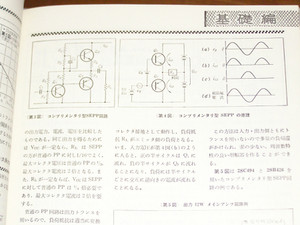
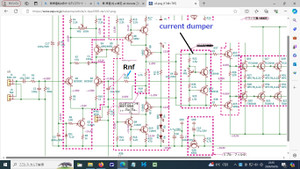


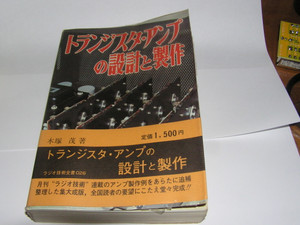
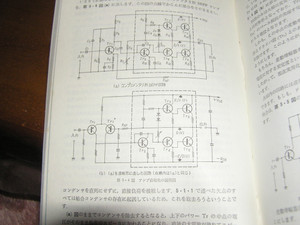
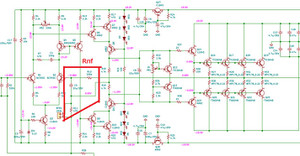
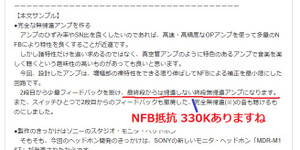
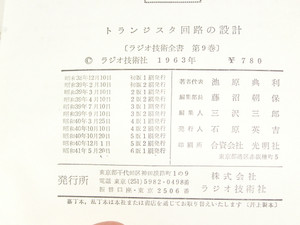
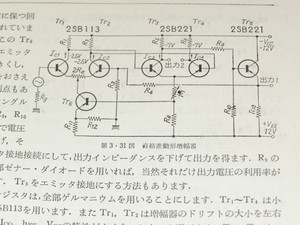
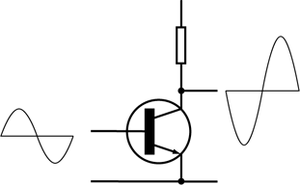



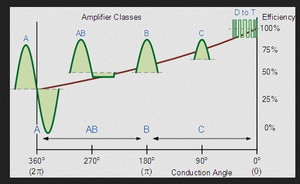
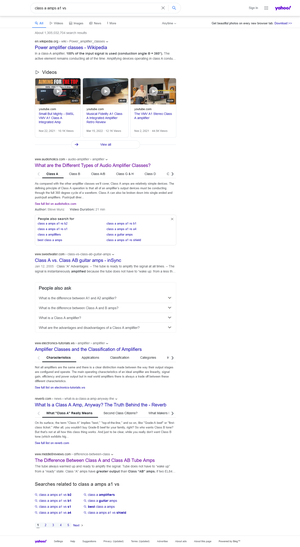
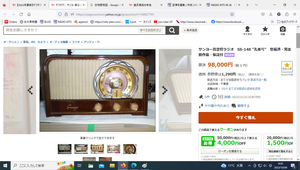



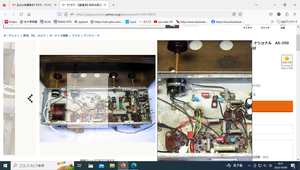

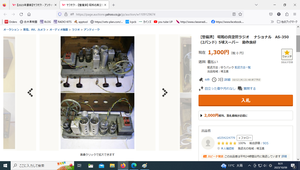
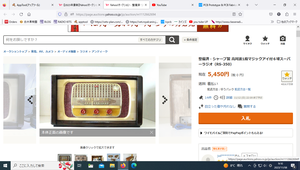
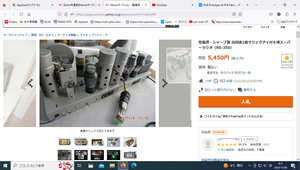




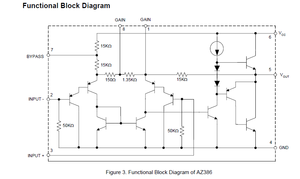
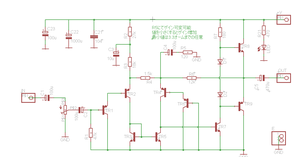
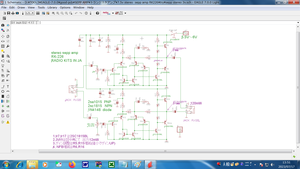
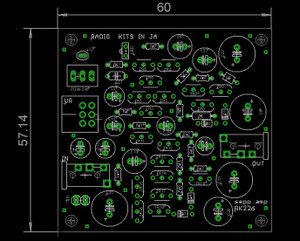
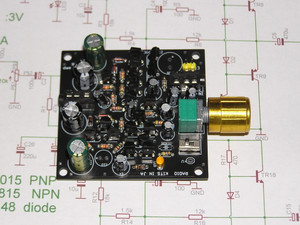
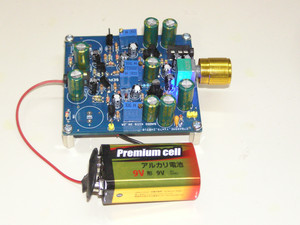

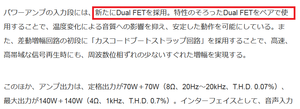
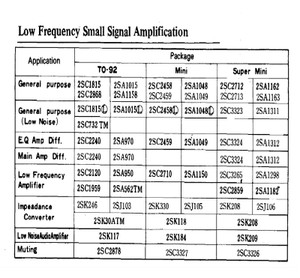








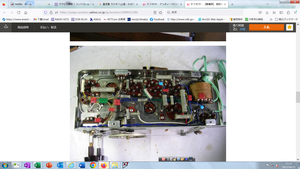


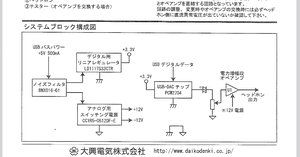

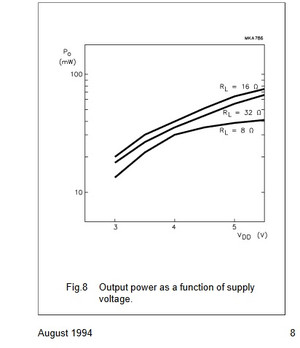
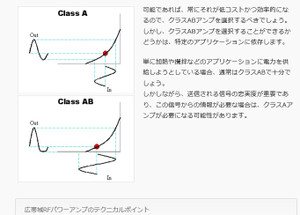
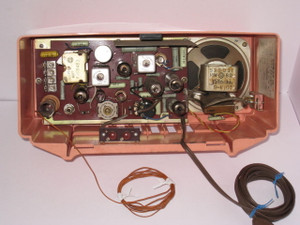
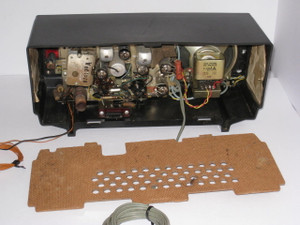
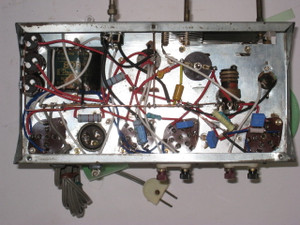
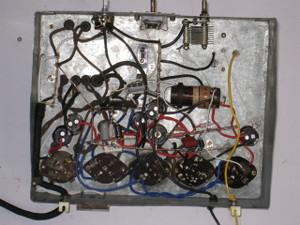
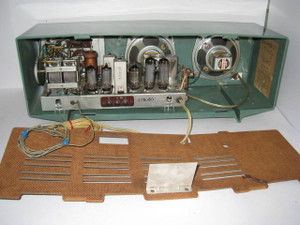
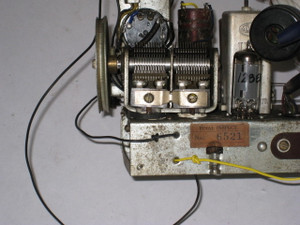
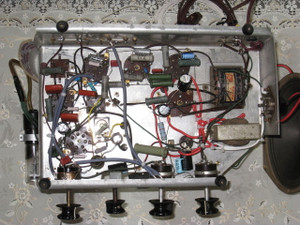
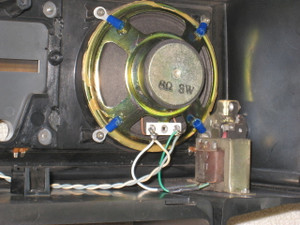
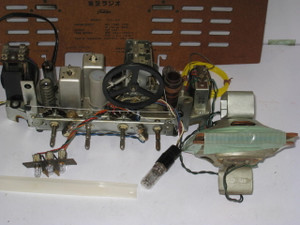
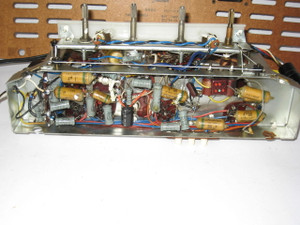
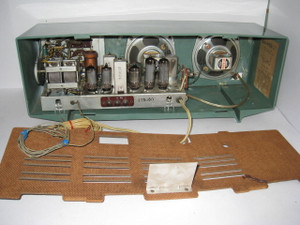

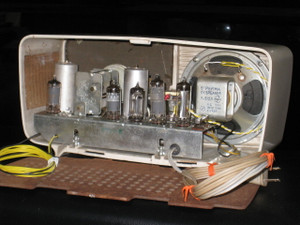
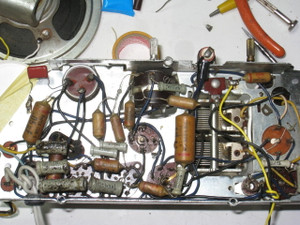
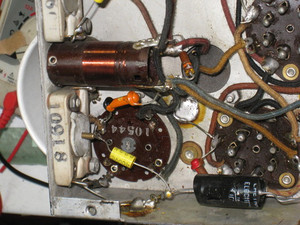
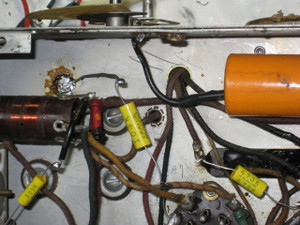

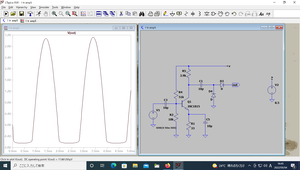

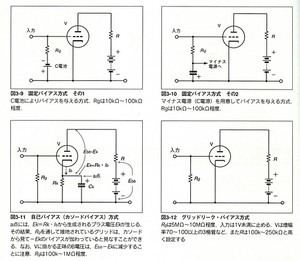
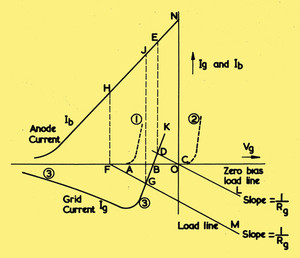
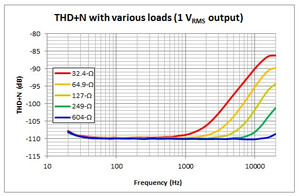

最近のコメント